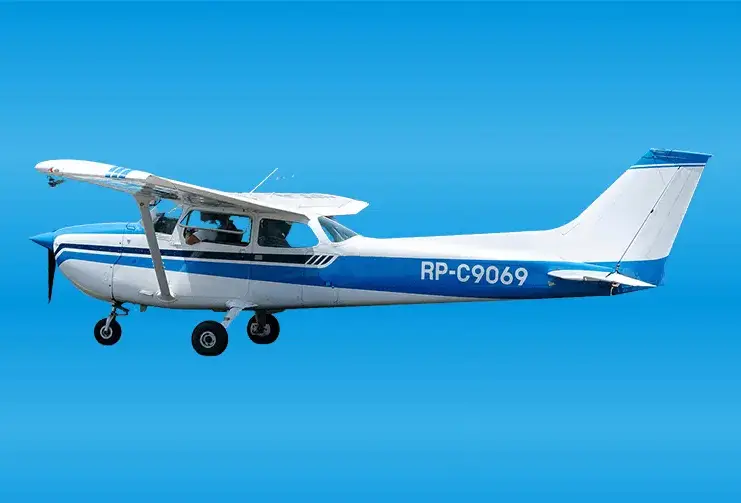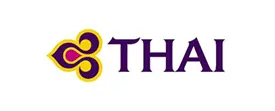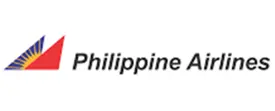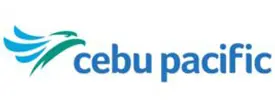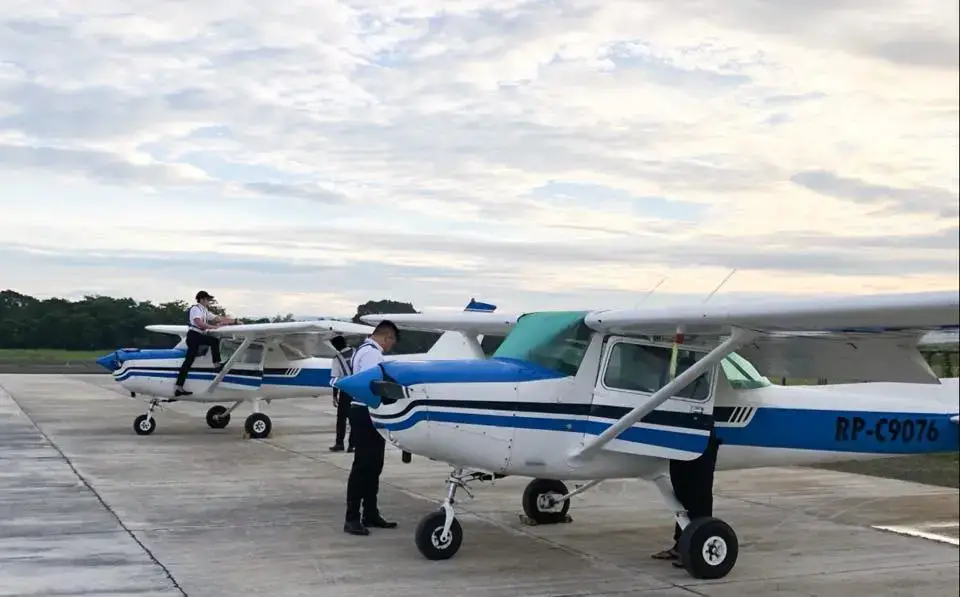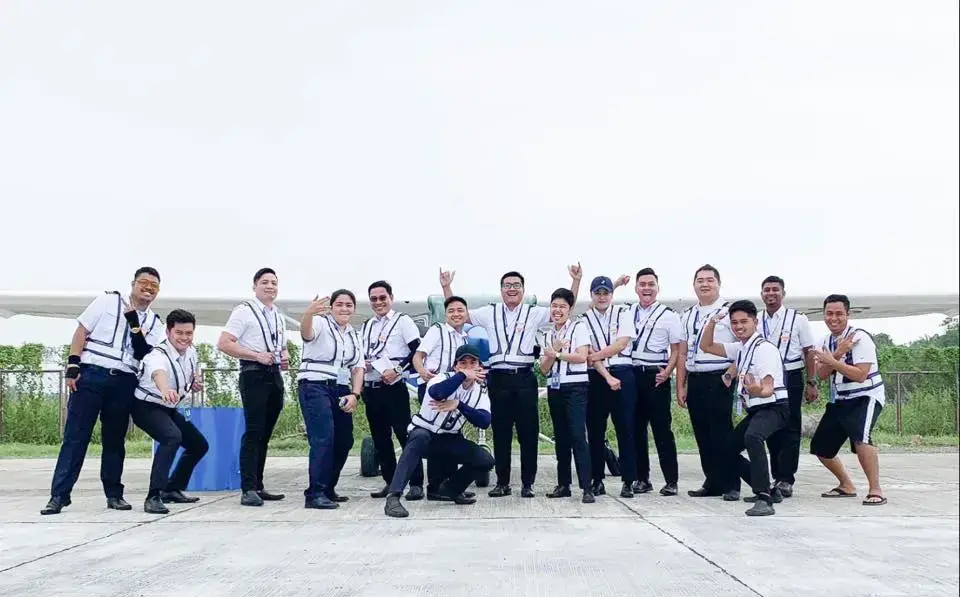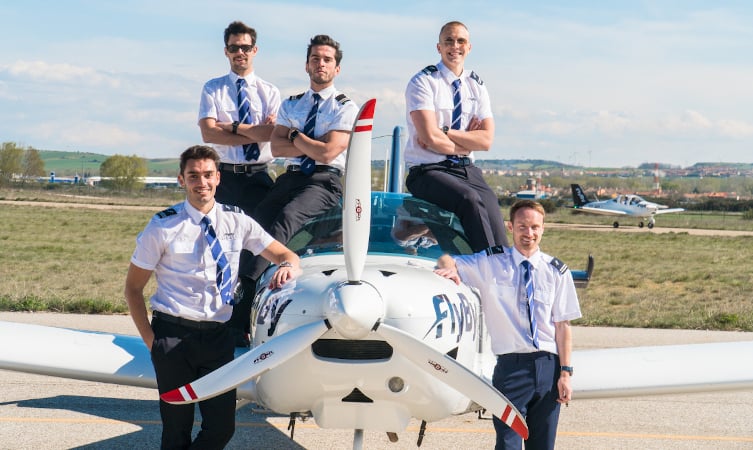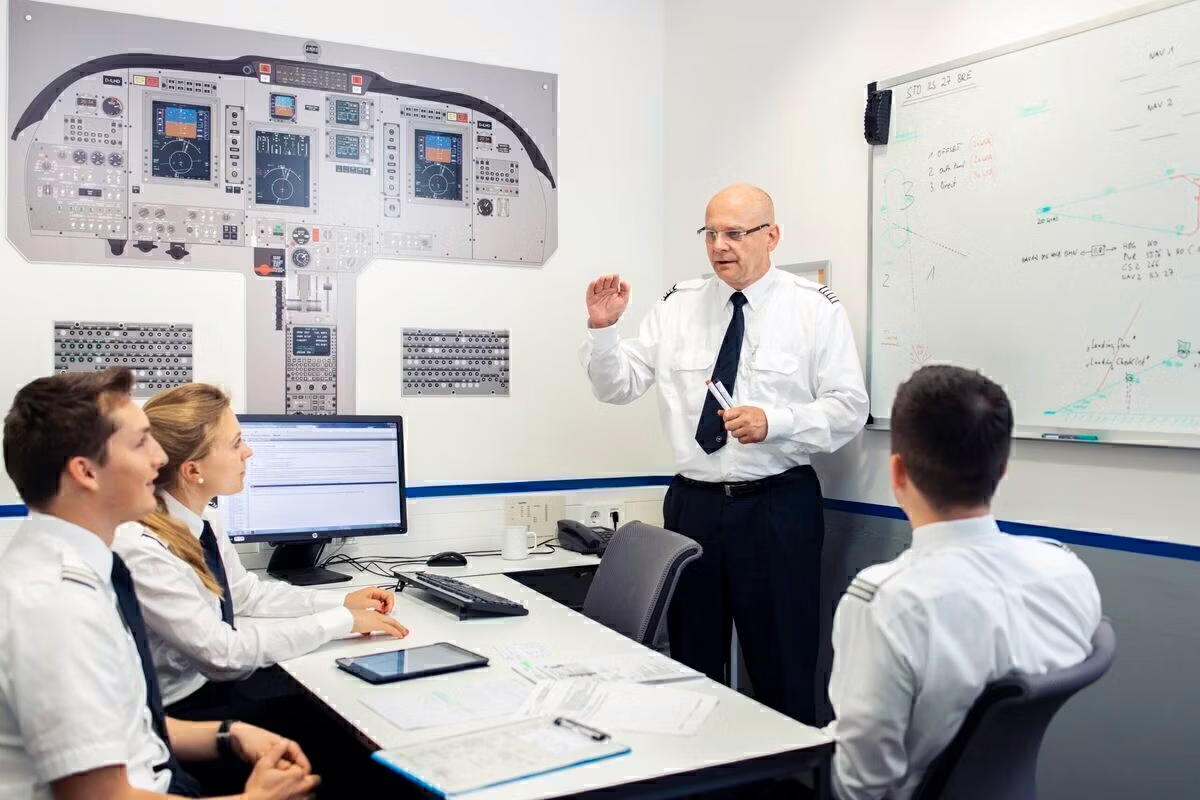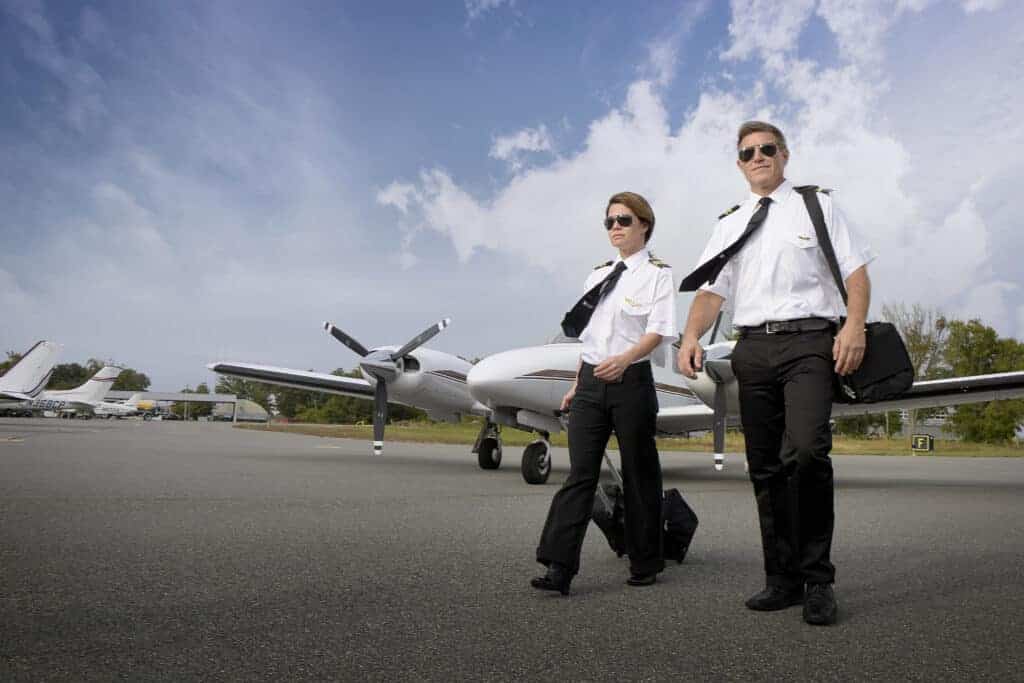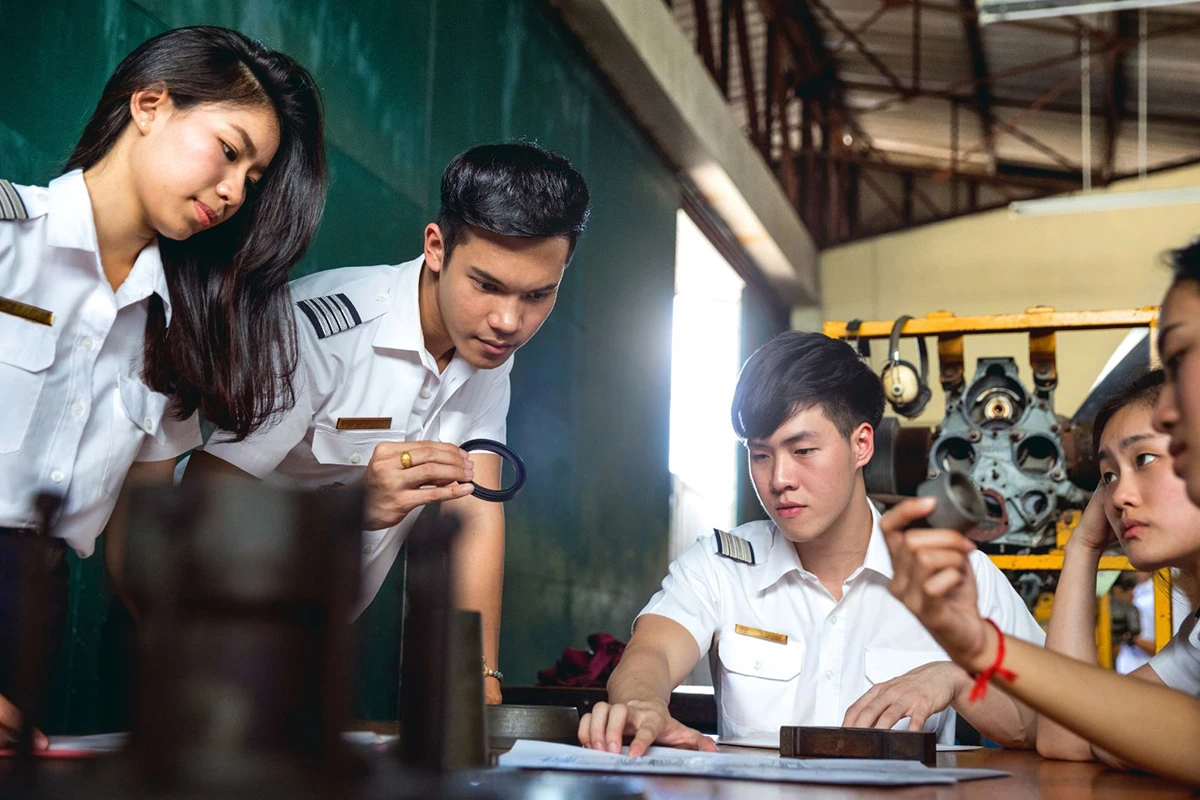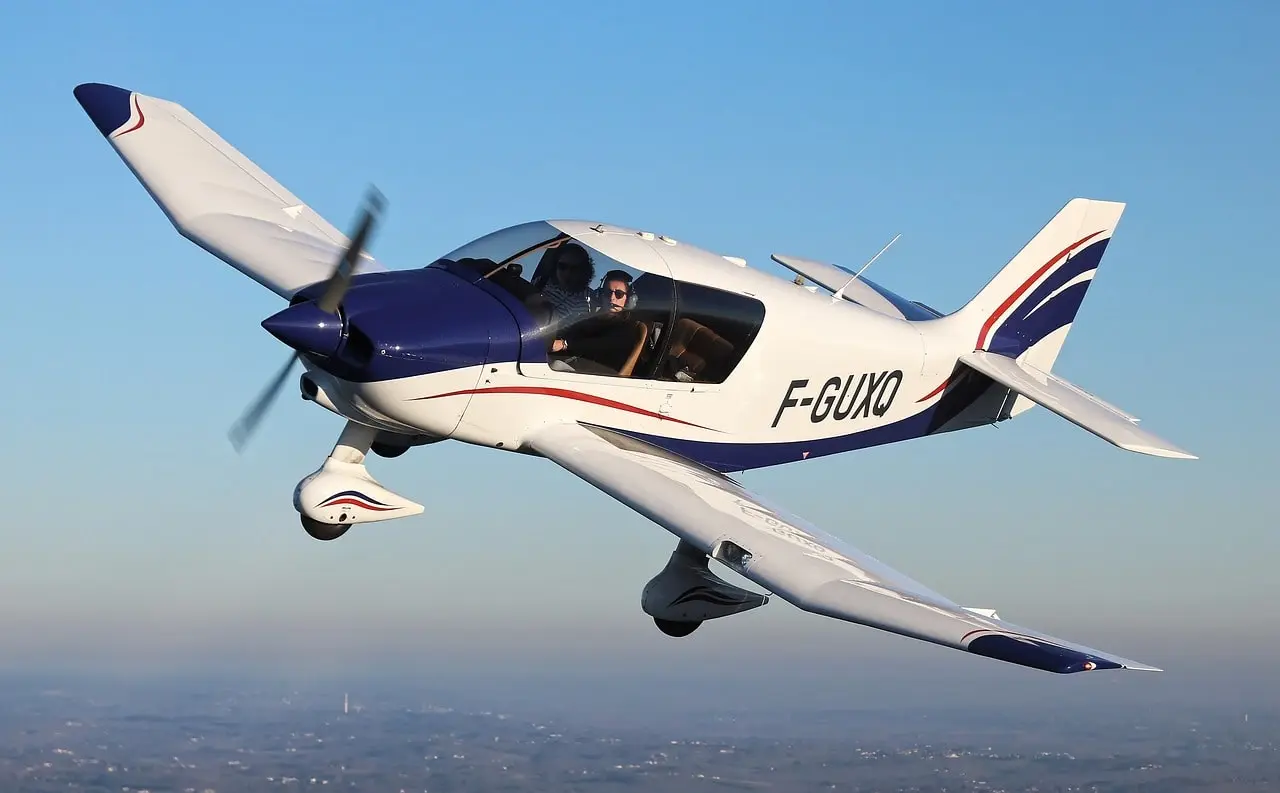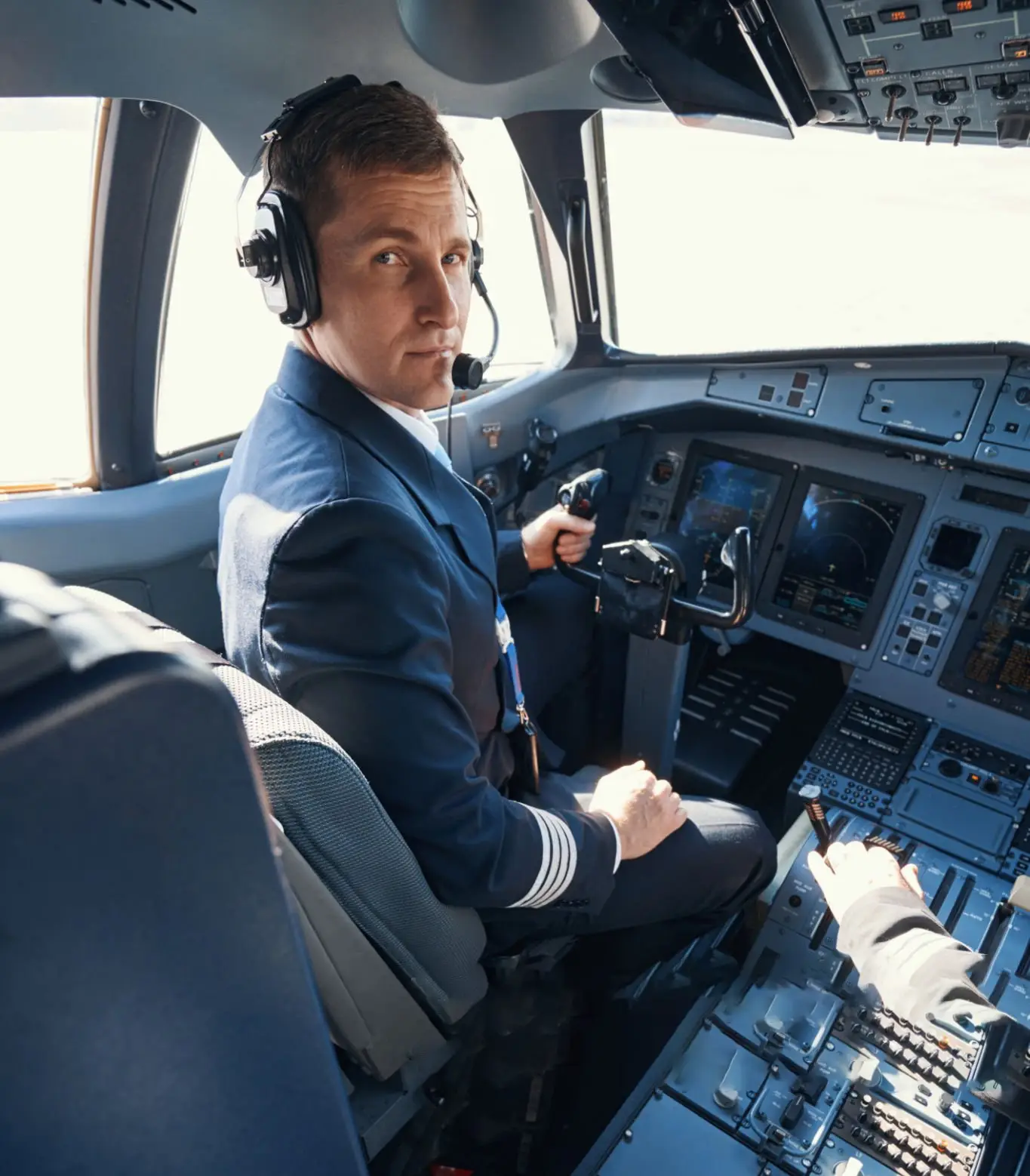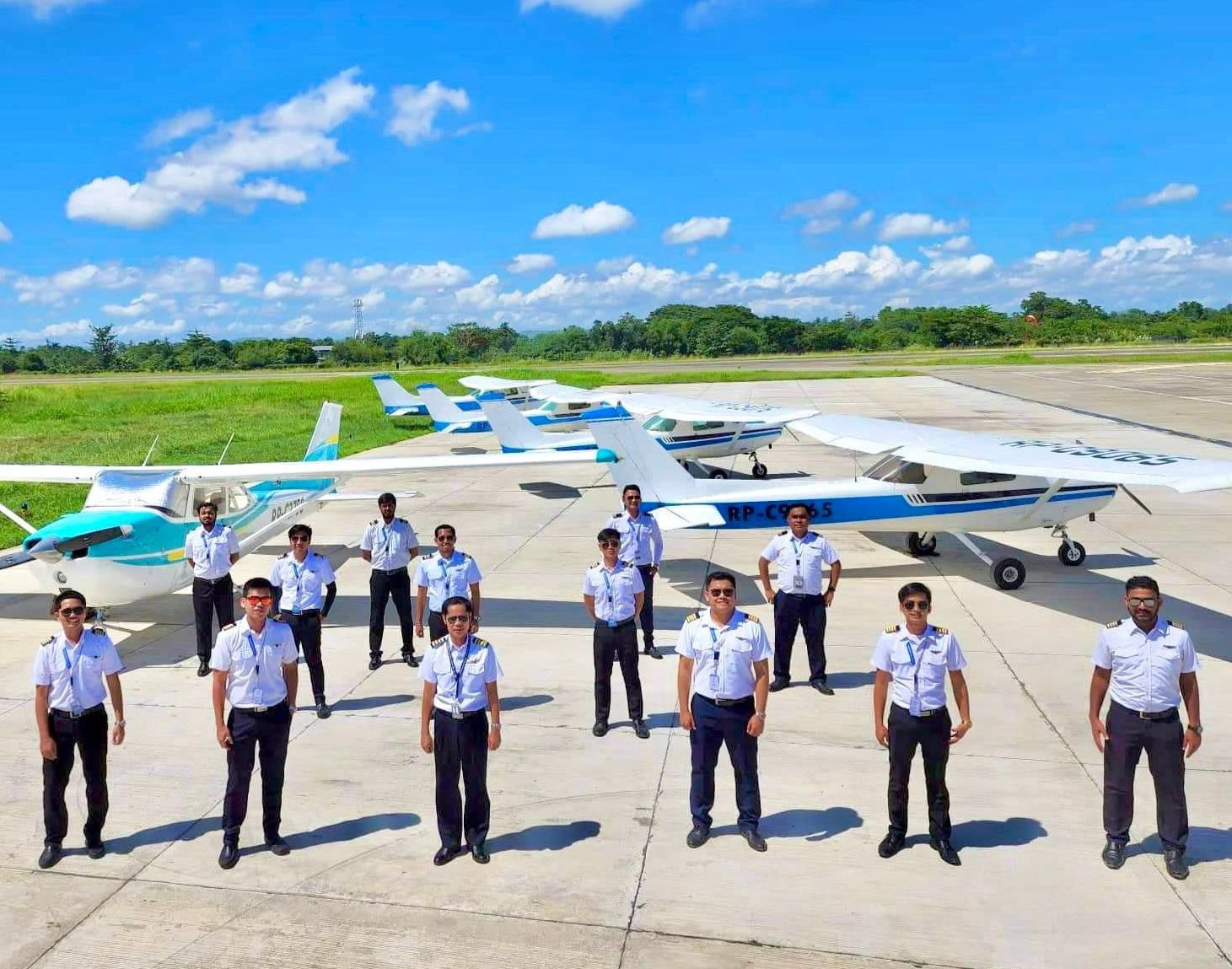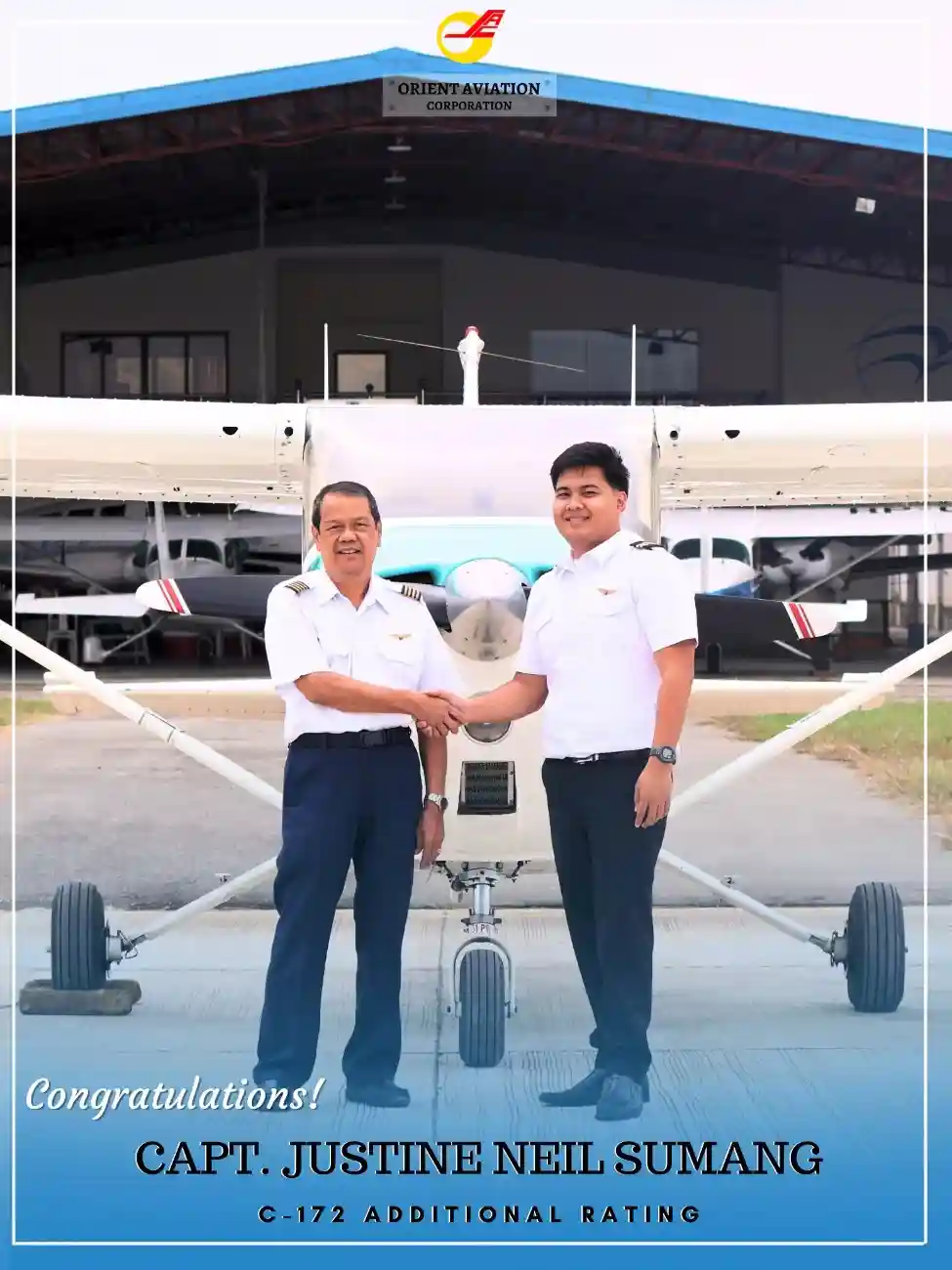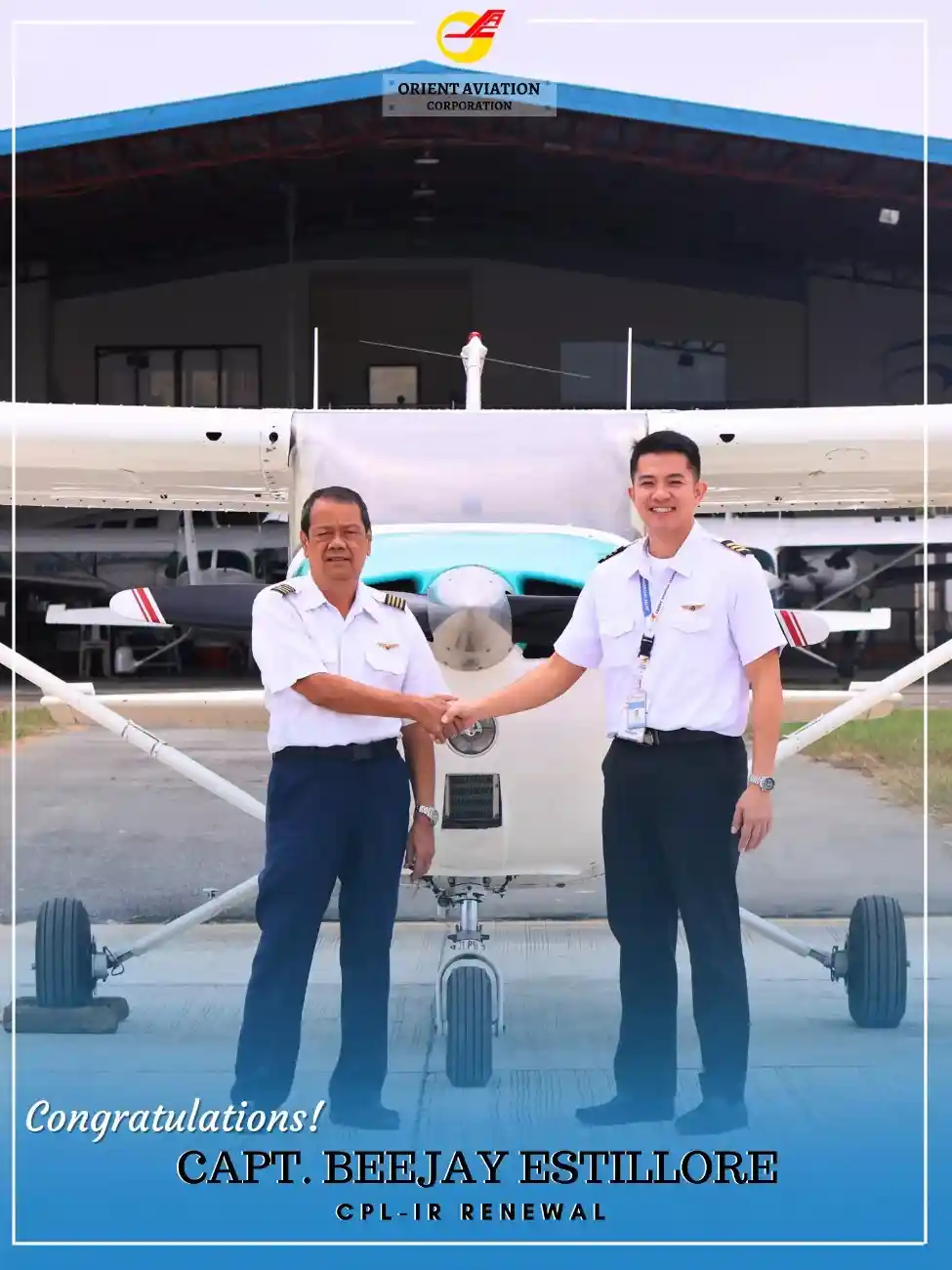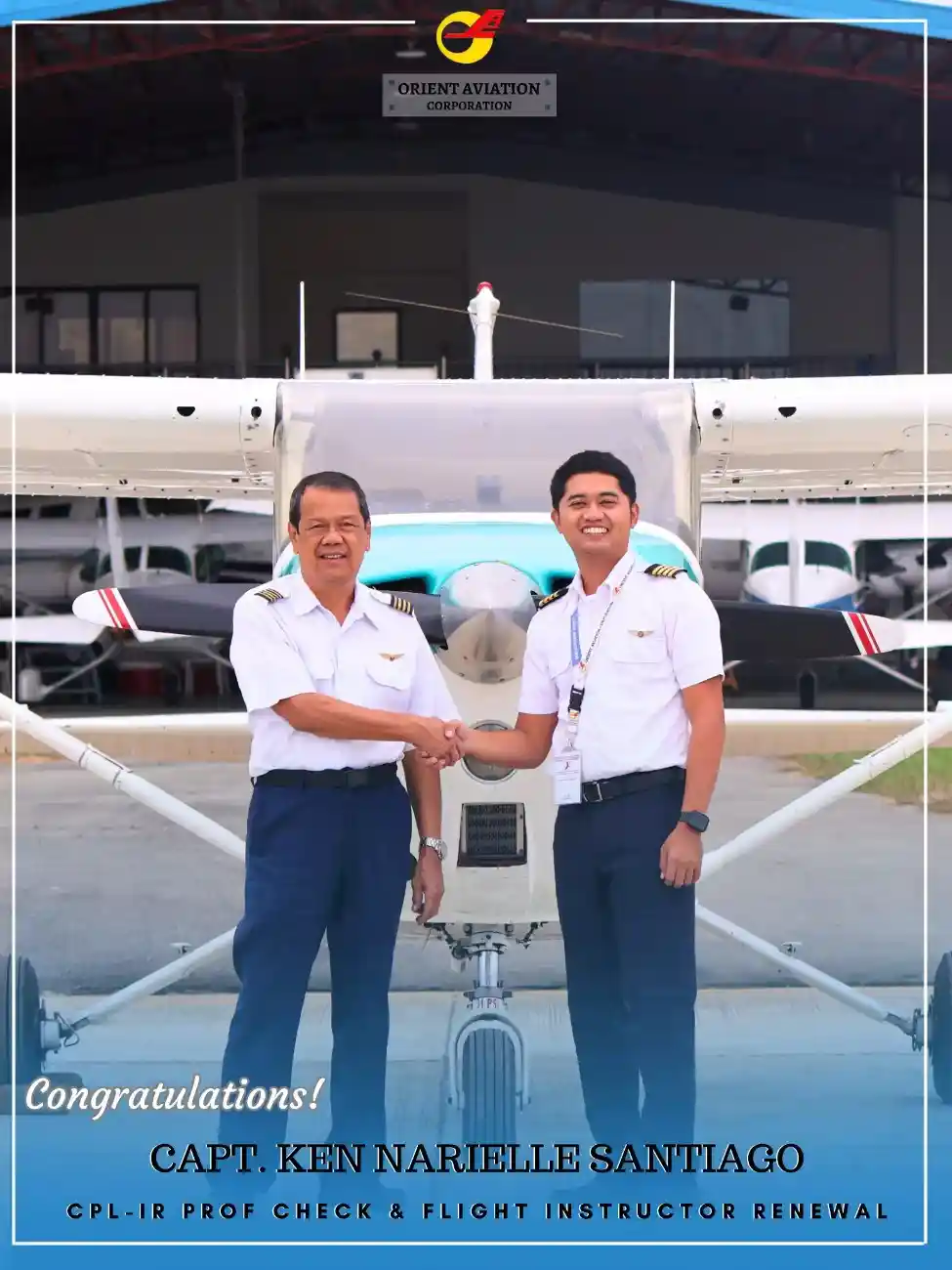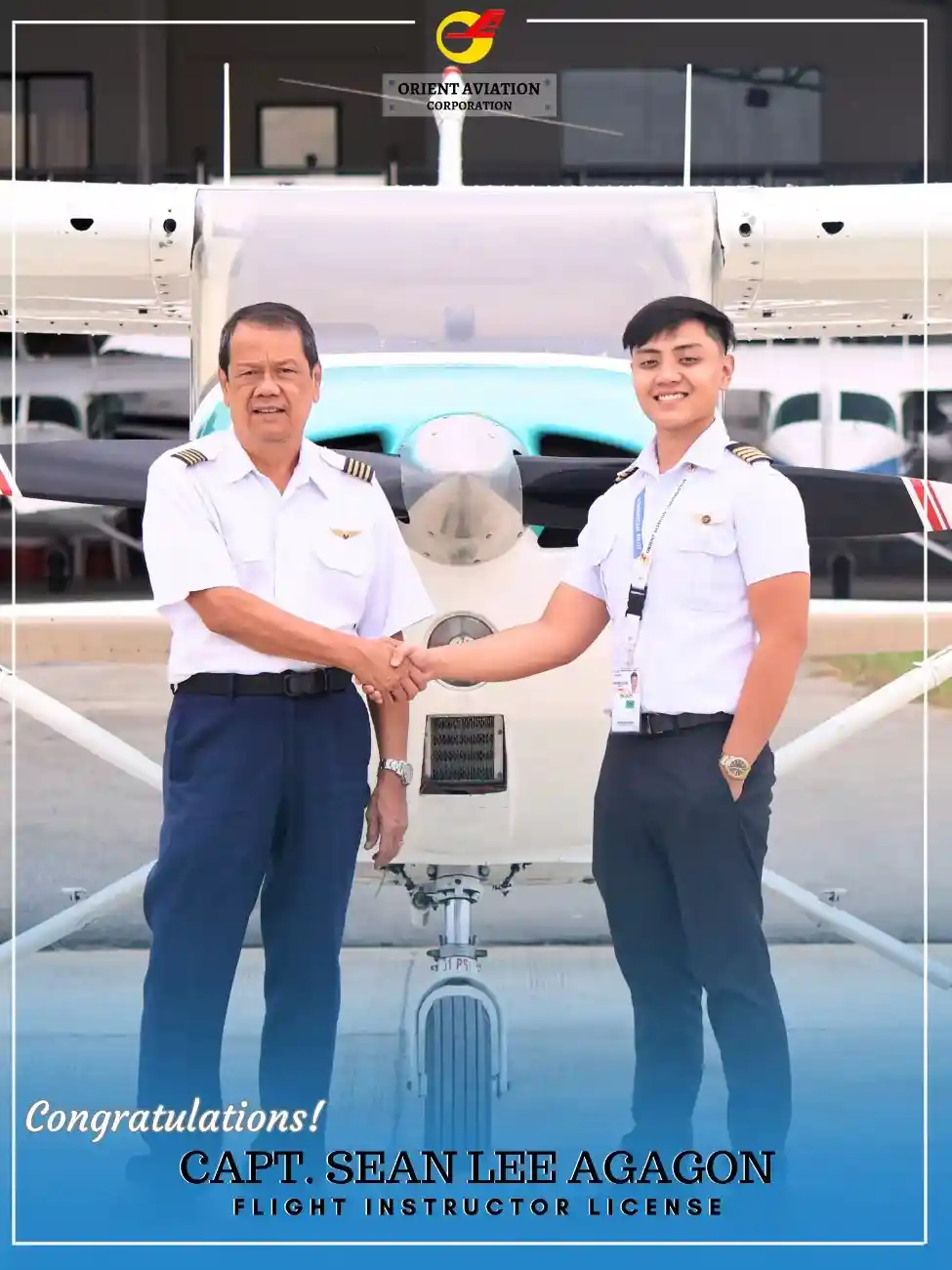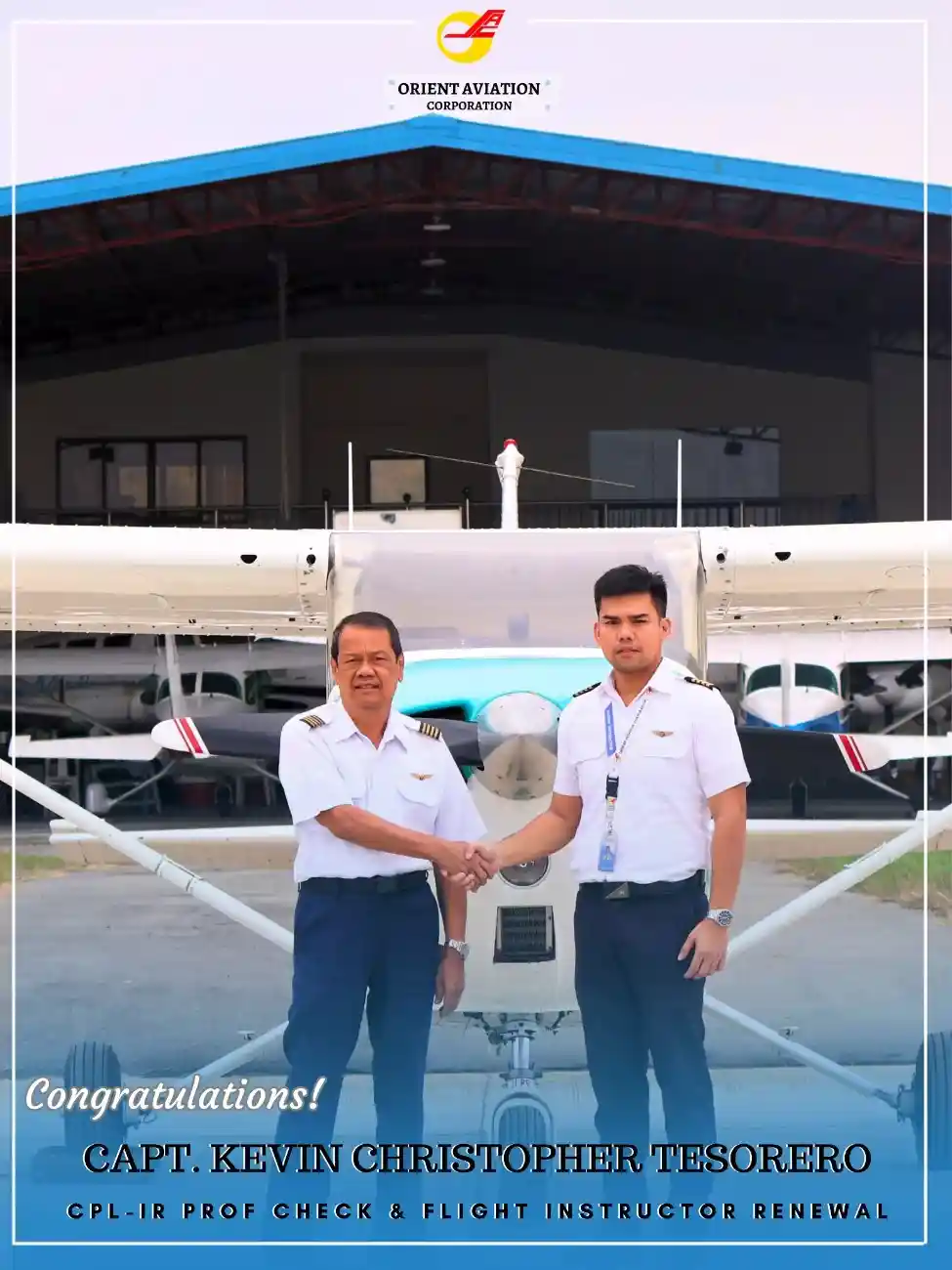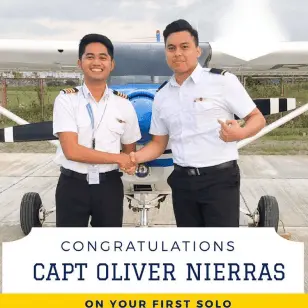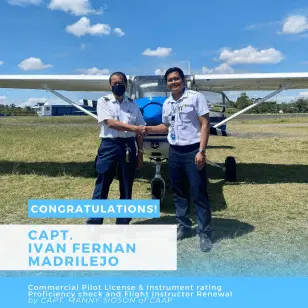Our Courses
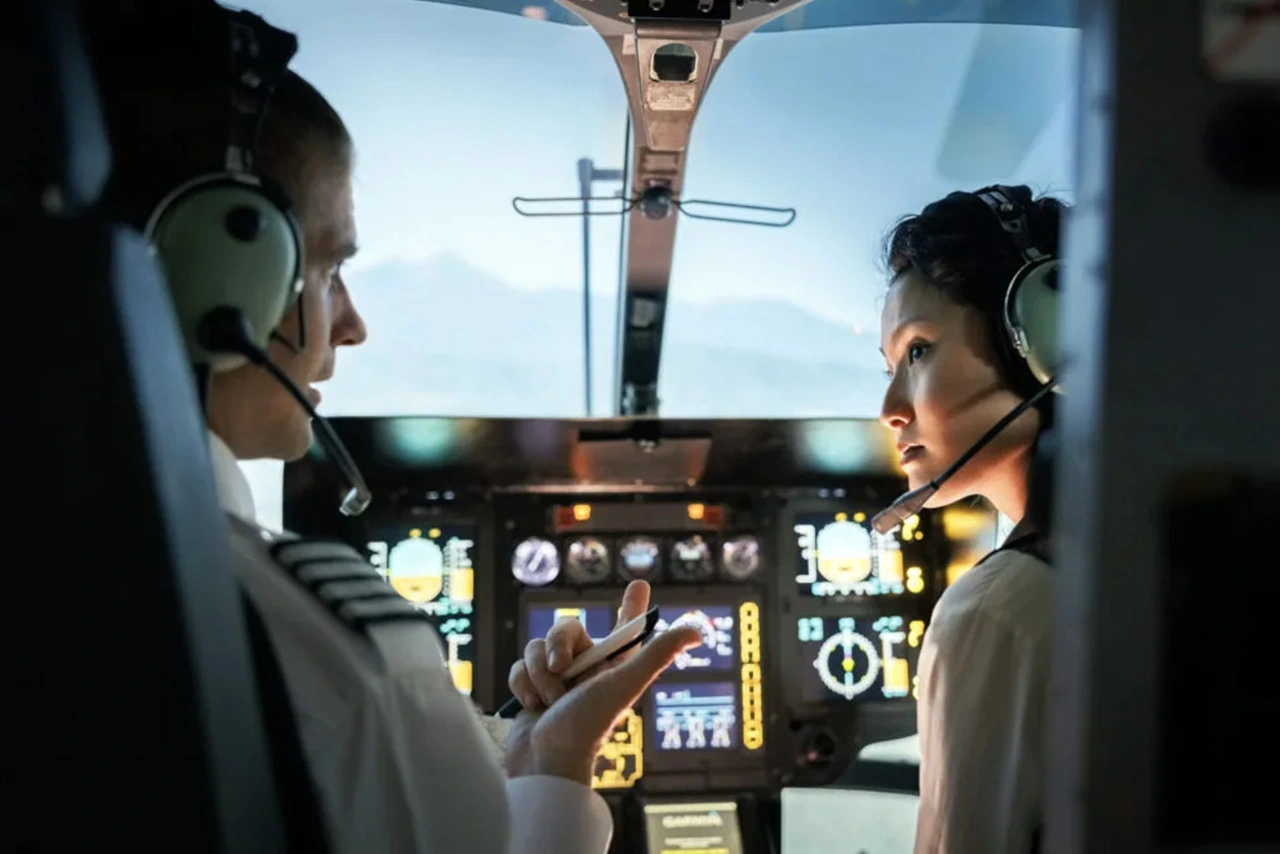
Embark on Your Aviation Journey: Attain Your Student Pilot License and Soar to New Heights!
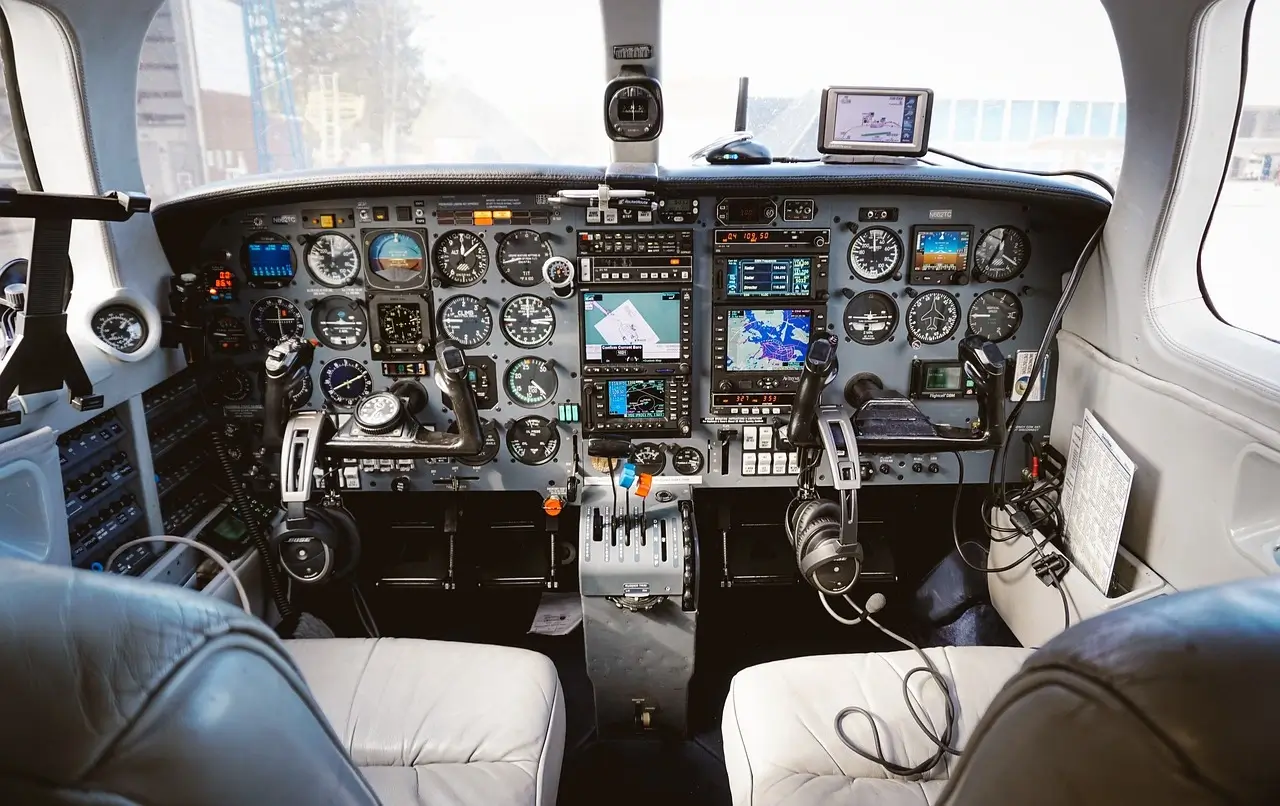
Unlock the Skies: Obtain Your Private Pilot License and Take Control of Your Aviation Destiny!
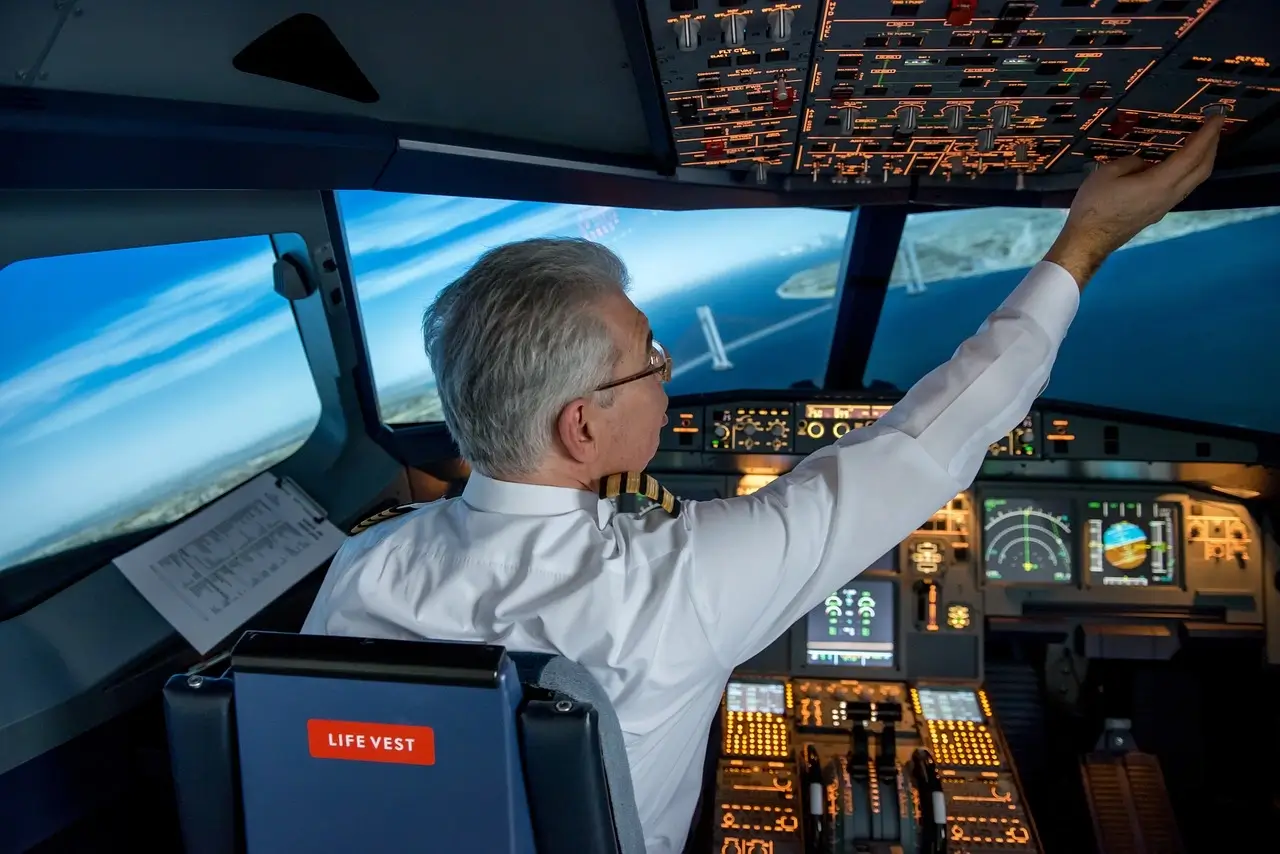
Elevate Your Career: Earn Your Commercial Pilot License and Transform Your Passion for Flying into a Professional Adventure.
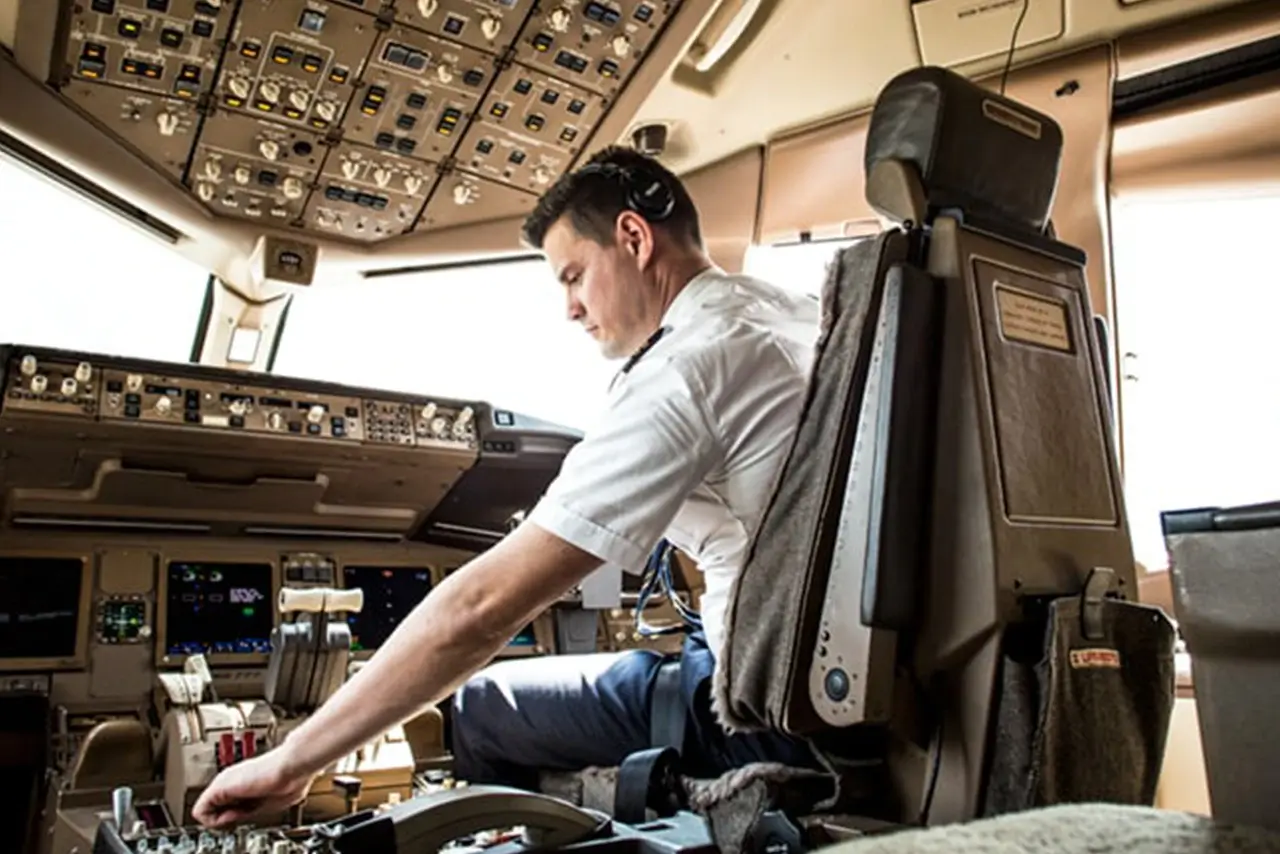
Navigate the Skies with Precision: Achieve Your Instrument Rating and Master the Art of Flying in Challenging Weather Conditions.
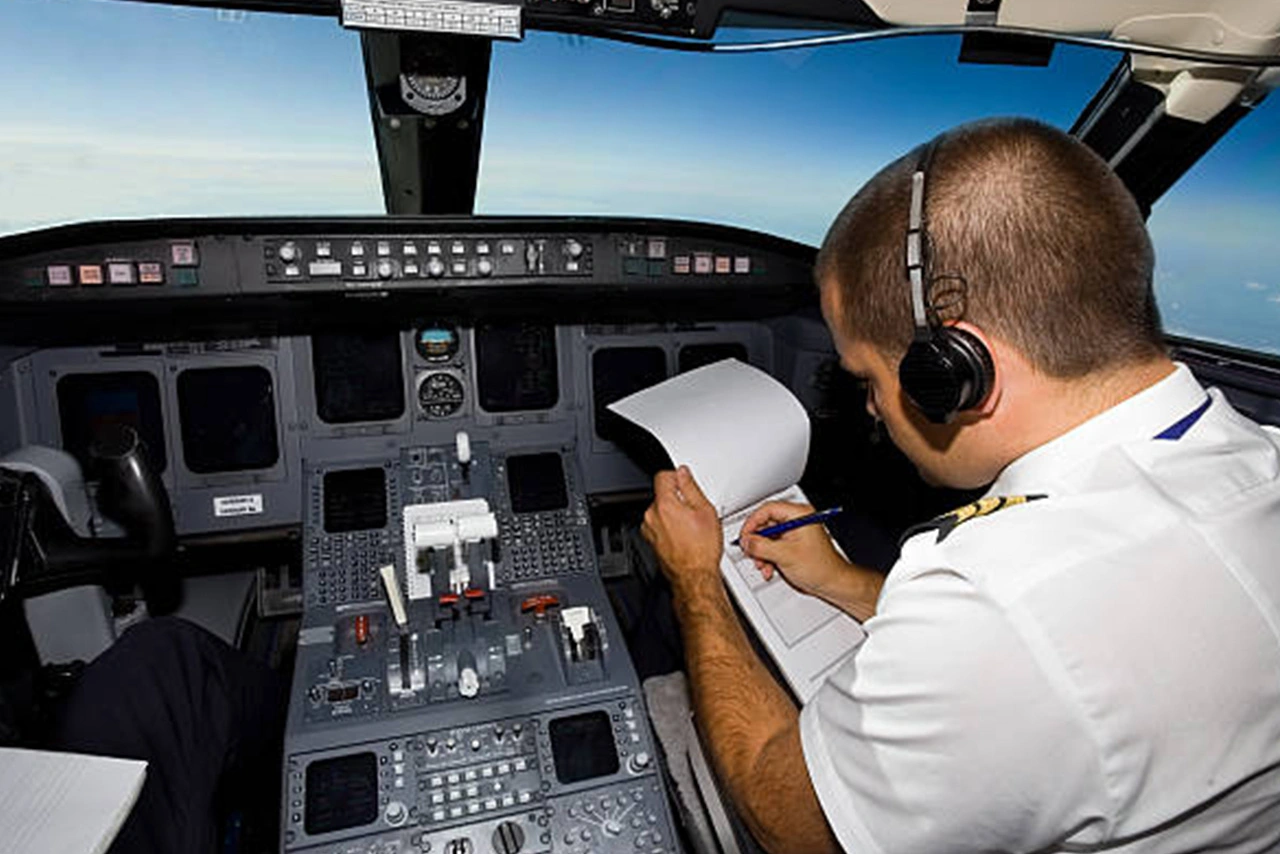
Expand Your Horizons: Attain Multi-Engine Rating and Unleash the Power of Commanding Sophisticated Aircraft in Your Aviation Journey.
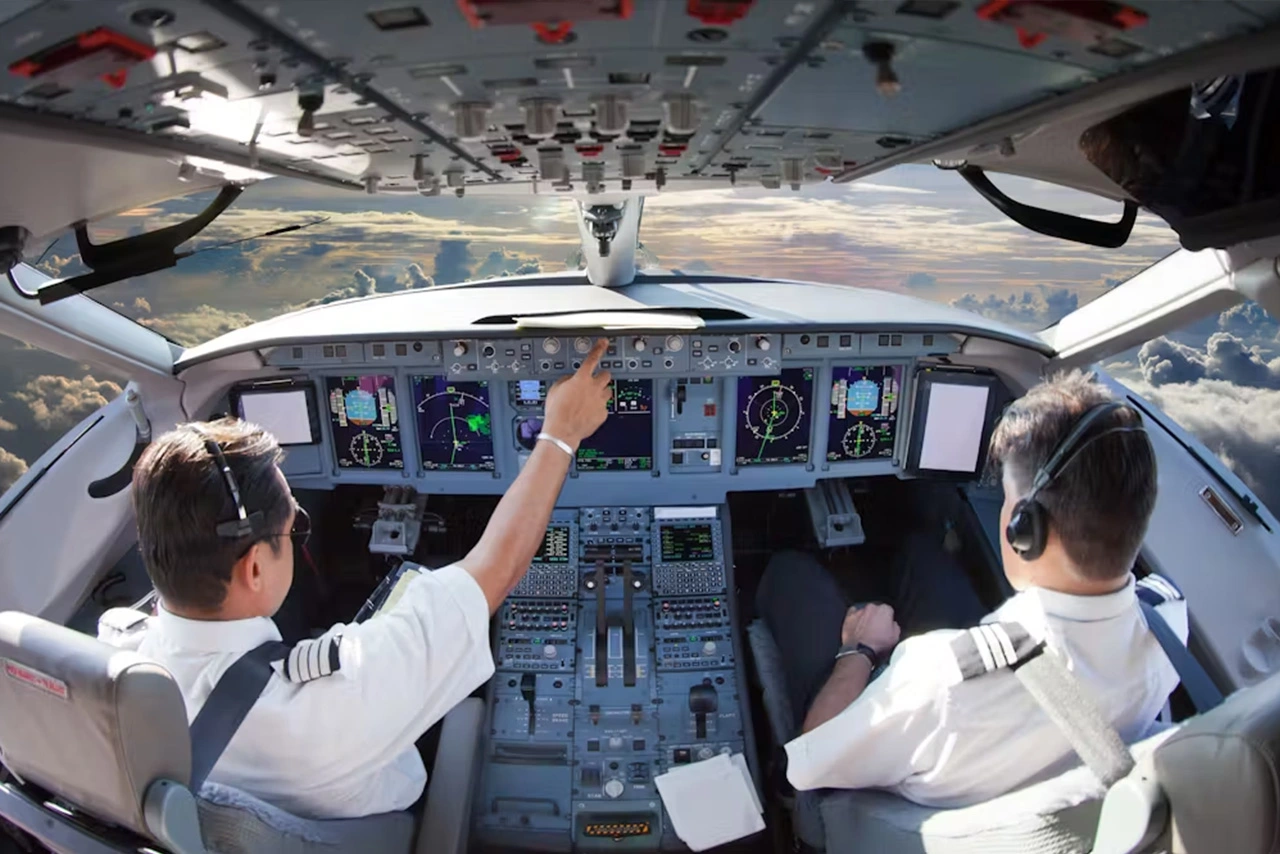
Reach the Pinnacle: Attain Your Airline Transport Pilot License (ATPL) and Open the Doors to Commanding Commercial Airlines at the Highest Level.
-
0000+
+
Completed Pilot Training
-
00
Aircrafts
-
00+
+
Nationalities Trained With US
-
00
Yrs
Of Providing World Class Pilot Training
Want to find out more about our pilot courses?


We don’t just train and develop world-class PILOTS, we produce future LEADERS for the aviation industry
Our Students
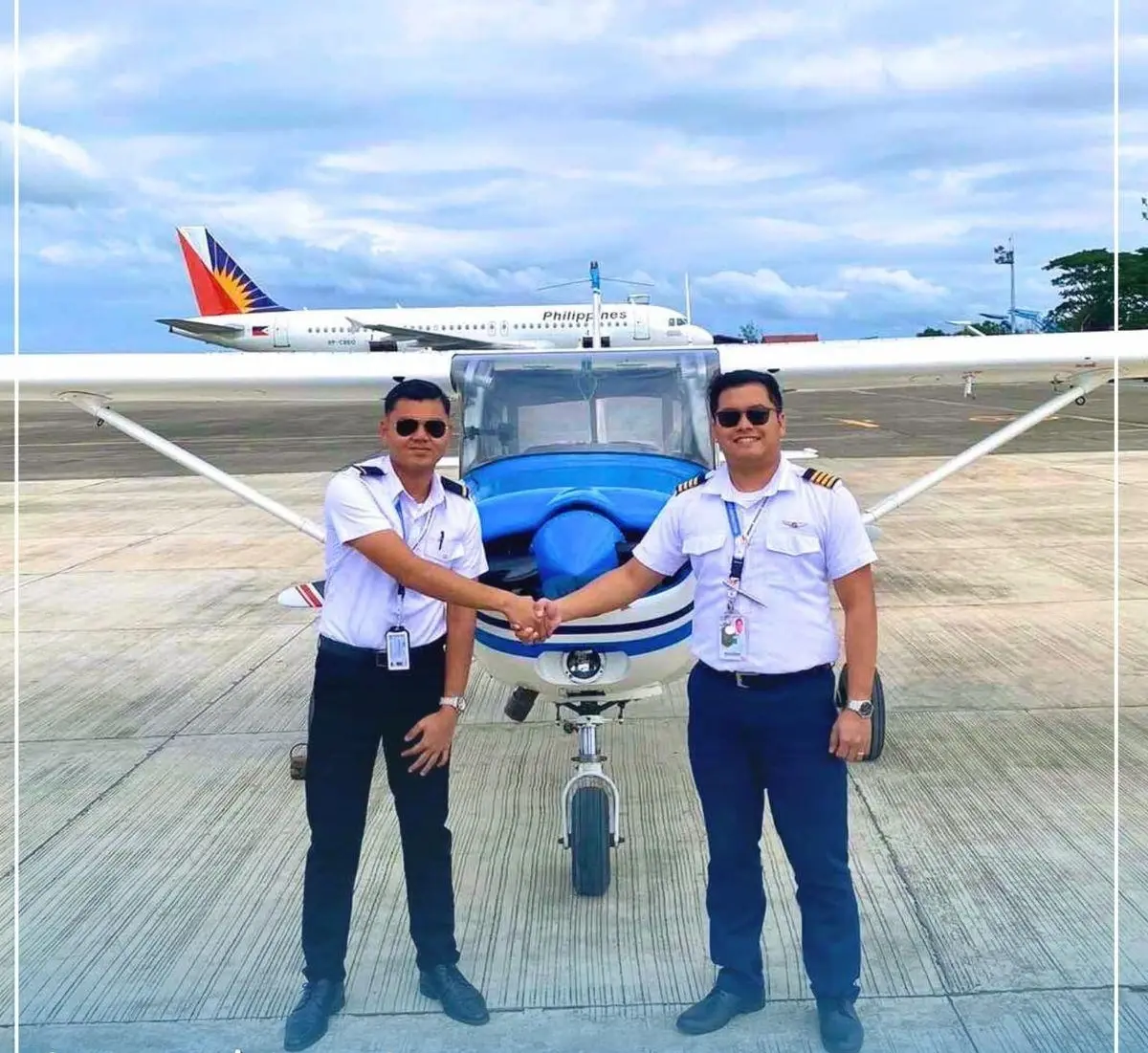
Allen Neill Valera
First Solo
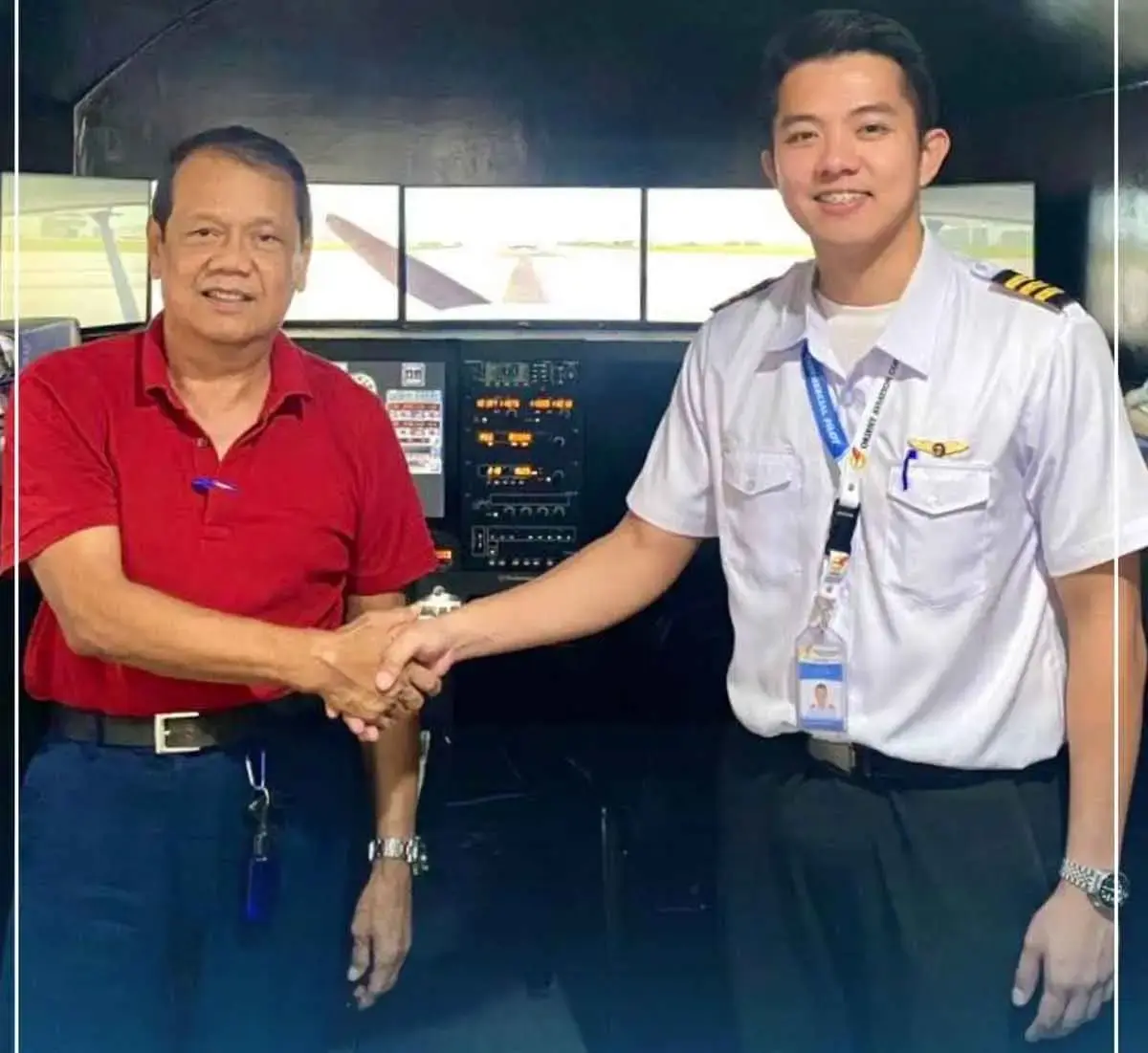
Beejay Estillore
INSTRUMENT RATING CHECKRIDE
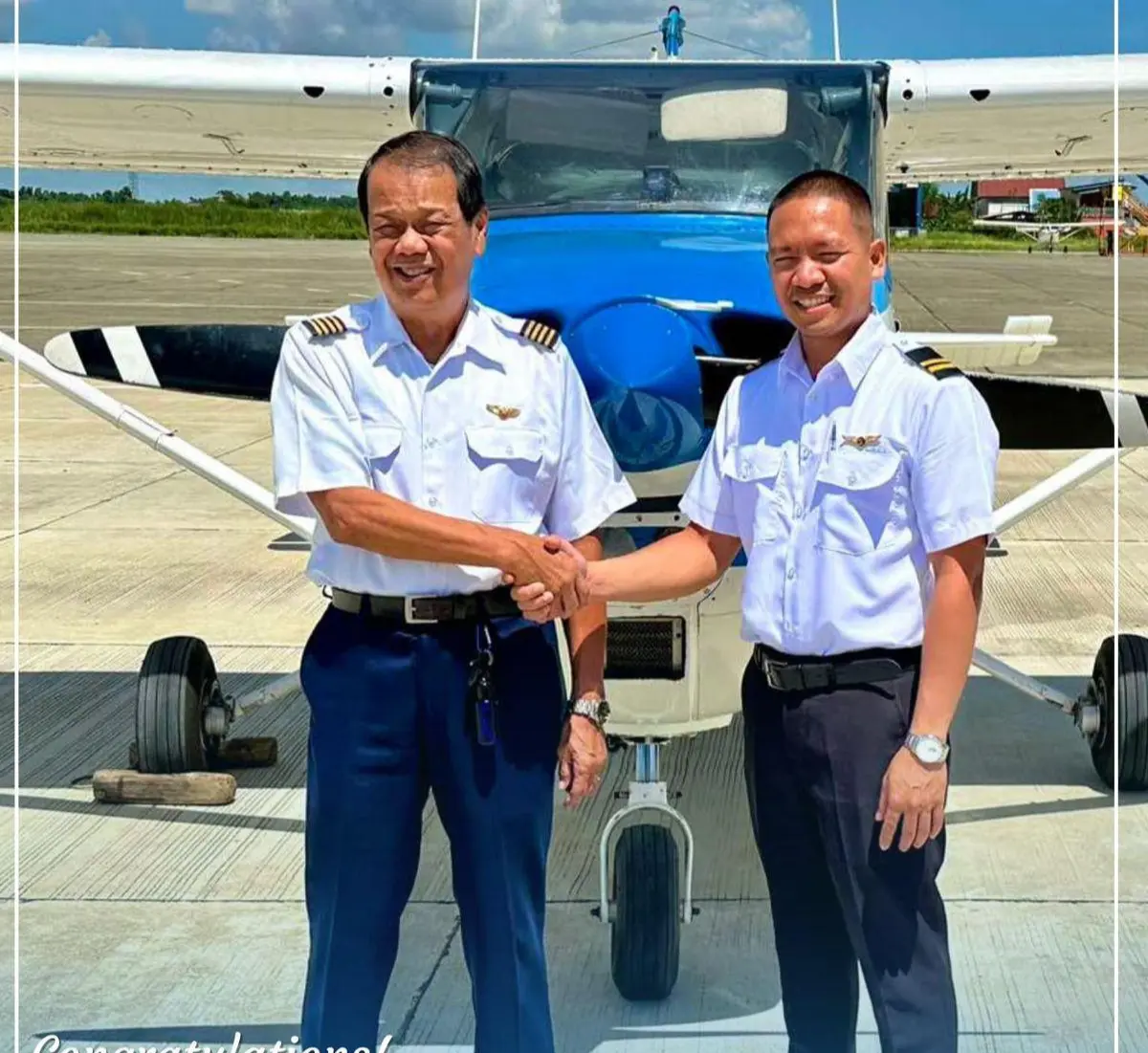
Jake Warene Matalaba
PRIVATE PILOT LICENSE

Justien Neil Sumang
PRIVATE PILOT LICENSE
Training Capability
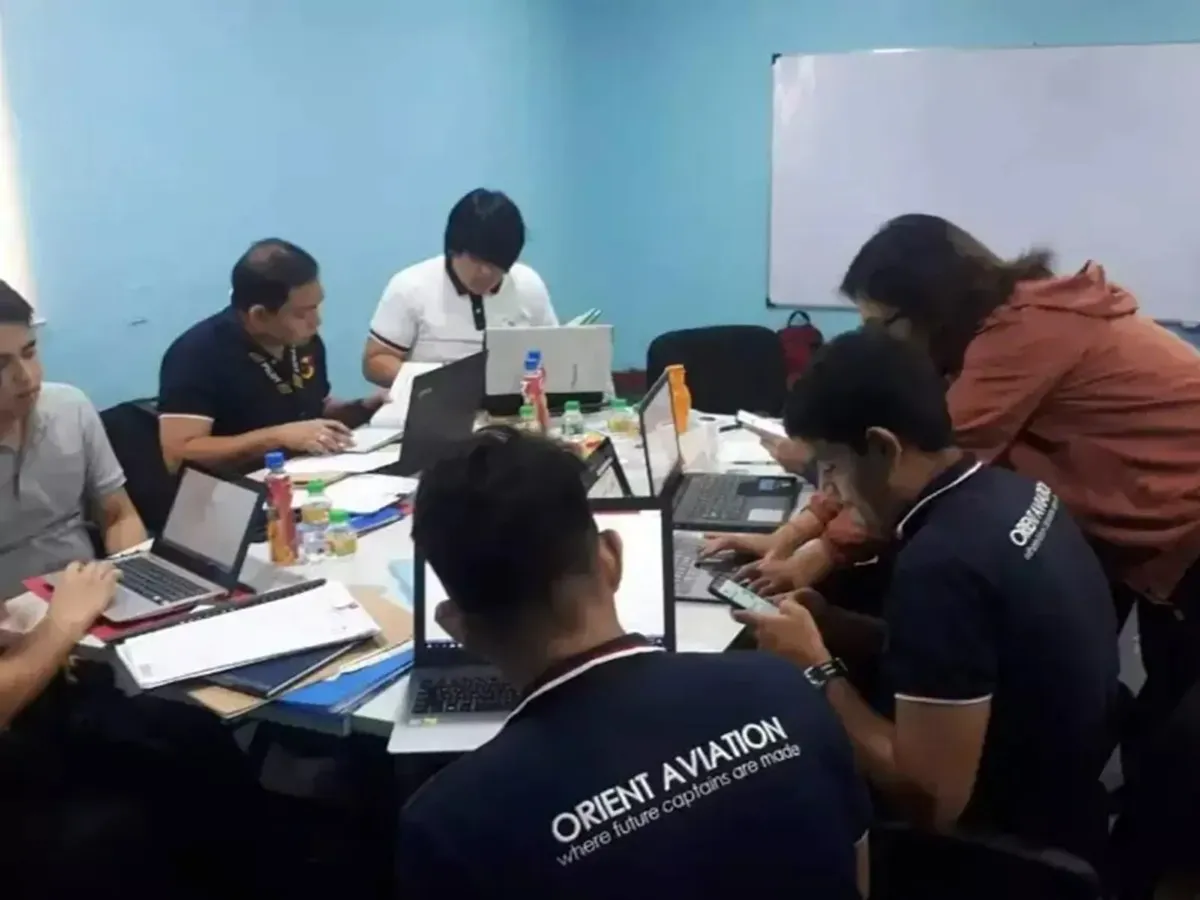


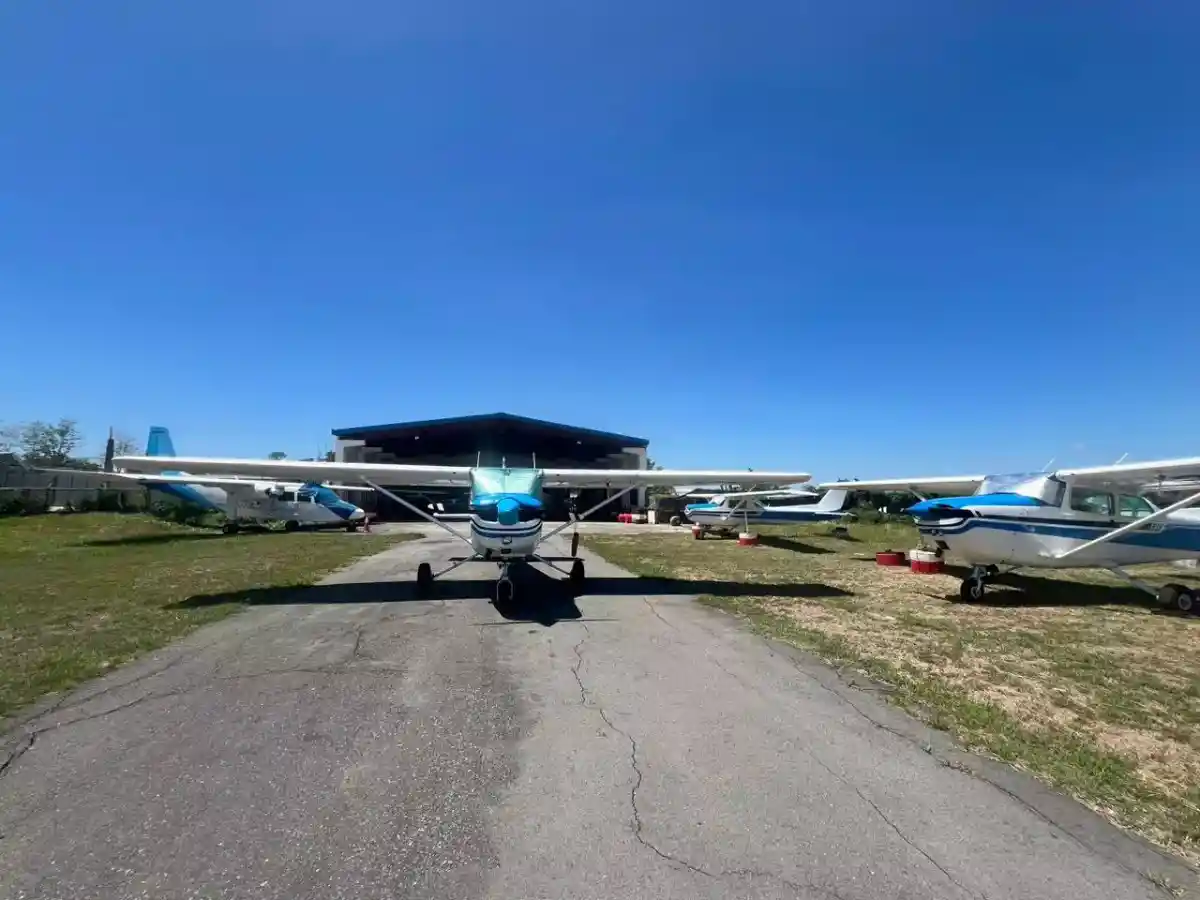
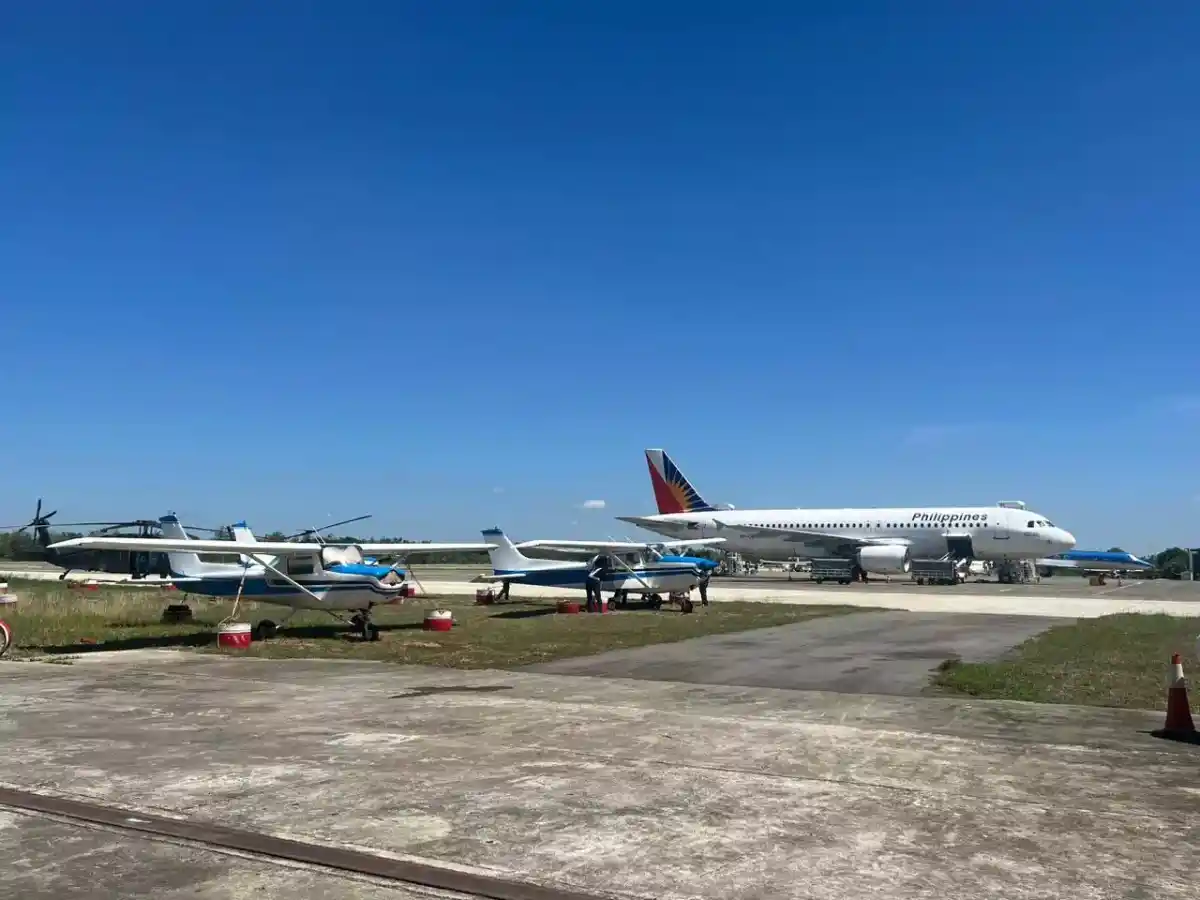
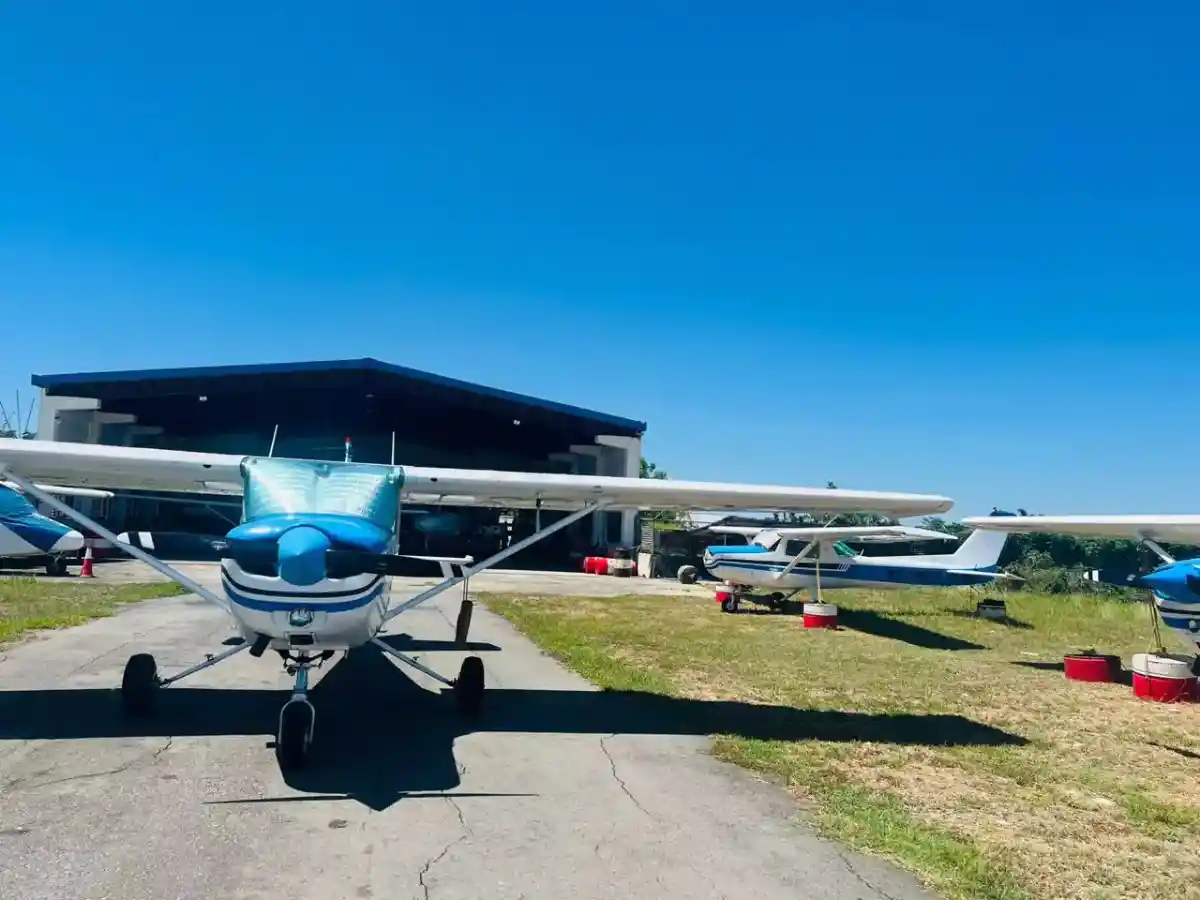
Our Pilots are Working in Following Organisations


Here’s what our clients are saying
Quick Guide in Getting Your Pilot Licenses in the Philippines
Hi there, future Pilot! Your interest in becoming a pilot must have brought you to this page. You might be wondering how to become a Pilot in the Philippines after 12th Grade? Is becoming a Pilot your dream or are you simply just curious about how to become a Pilot in the Philippines? If you answer yes to one of these, then this “How to become a Pilot in the Philippines 2024” page is for you!
Take Off with Confidence:
Ever gazed at the heavens, captivated by the graceful dance of airplanes? Do you dream of soaring through the clouds, witnessing breathtaking landscapes from a bird’s-eye view, and experiencing the unparalleled thrill of piloting your own aircraft? The Philippines might just be the perfect launchpad for your pilot aspirations. This comprehensive guide, meticulously crafted with over 5,000 words, equips you with the knowledge, resources, and inspiration to navigate your journey from aspiring aviator to professional pilot, right here in the heart of Southeast Asia.
Charting Your Course: Exploring Your Pilot Path
Before embarking on your exciting adventure through the pilot training Philippines landscape, understand the diverse paths you can take. Choosing the right direction will not only guide your training but also shape your future career.
-
Define Your Goal:
- Private Pilot License (PPL): Take to the skies for leisure purposes, carrying passengers and cargo non-commercially. Explore stunning locales at your own pace, savouring the joy of recreational flying.
- Commercial Pilot License (CPL): Open doors to professional flying jobs. As a CPL Philippines holder, you can work as a paid pilot for airlines, cargo companies, or private operators, fulfilling your dream of transforming your passion into a rewarding career.
- Airline Transport Pilot License (ATPL): The pinnacle of pilot licenses, the ATPL Philippines qualifies you to command large passenger aircraft for scheduled airlines. If navigating massive jets across continents fuels your passion, this is your ultimate goal.
-
Mapping Your Educational Path:
- High School Diploma: The minimum requirement for all pilot licenses in the Philippines, except for the ATPL, which requires a college degree. Ensure you have a strong foundation in mathematics, physics, and English before embarking on your training.
- Aviation-Related College Degree: Several colleges in the Philippines offer integrated programs combining flight training with academic studies. Earning a degree alongside your CPL Philippines can enhance your career prospects and open doors to specialized aviation fields.
- Airline Cadet Pilot Program: Many major airlines offer sponsored training programs, providing comprehensive pilot training Philippines in exchange for a commitment to work with the airline upon graduation. These programs can ease financial burdens and guarantee a smooth transition into your professional career.
-
Military Service as an Option:
- Philippine Air Force: If serving your country while acquiring world-class flight training appeals to you, the Philippine Air Force offers exciting opportunities. After completing their initial service commitment, pilots often transition to successful careers in commercial aviation.
-
Taking Flight: The Stages of Your Training Journey
The path to becoming a pilot in the Philippines is paved with dedicated training and rigorous certifications. Here’s a breakdown of the key stages that await you:
- Student Pilot License (SPL): At just 16 years old, you can begin your aerial journey with the SPL. Obtain your medical certificate, demonstrate English language proficiency, and take to the skies under the watchful eye of an instructor. This is your first taste of solo flight, a thrilling milestone in your pilot development.
- Private Pilot License (PPL): At 17 years old, you can earn your PPL Philippines, enabling non-commercial flying with passengers.
- Commercial Pilot License (CPL): This is the gateway to professional piloting opportunities. To obtain your CPL Philippines, you must be at least 18 years old, hold a PPL, possess a Class One Medical Certificate, and complete 150 hours of flight training, including 110 hours from the CPL stage. This comprehensive training equips you with the skills and knowledge required for safe and efficient aircraft operation in a commercial setting.
- Instrument Rating (IR): Expanding your flying capabilities, the IR enables you to operate safely in all weather conditions using instruments. You can obtain your IR during CPL training or separately. Mastering instrument-aided navigation becomes crucial for commercial pilots who encounter diverse weather patterns and low-visibility situations.
- Multi-Engine Rating (MER): If your aspirations extend beyond single-engine aircraft, consider acquiring the MER. This rating qualifies you to pilot multi-engine airplanes, providing access to a wider range of aircraft types and potentially opening doors to larger passenger flights and cargo operations.
- Airline Transport Pilot License (ATPL): The pinnacle of pilot licenses, the ATPL unlocks the command seat of large passenger aircraft. To achieve this level, you must be at least 21 years old, hold a CPL with IR, possess a Class One Medical Certificate, and accumulate a minimum of 1,500 hours of total flight time. The ATPL training prepares you for the leadership and decision-making responsibilities associated with leading a flight crew and ensuring the safety of hundreds of passengers.
-
Choosing the Right Flight School: Navigate with Wisdom
With over 40 pilot training schools in the Philippines, finding the perfect fit can be daunting. Consider these crucial factors to ensure your training aligns with your aspirations and budget:
- Location and Accessibility: Choose a school near your residence or desired training environment. Some schools offer unique training grounds, like mountainous regions or coastal airports, providing valuable experience in diverse operating conditions.
- Reputation and Accreditation: opt for a well-established school with a proven track record of successfully training pilots and meeting the strict standards of the Civil Aviation Authority of the Philippines (CAAP). Accreditation signifies adherence to quality standards and safety protocols.
- Training Programs and Fleet: Select a school offering the specific licenses and aircraft types you’re interested in. Some schools specialize in specific areas, like airline training or turboprop aircraft operation. Familiarize yourself with the available aircraft models and ensure they align with your career goals.
- Cost and Financial Aid: Tuition fees vary across schools, and exploring scholarship or loan options can ease the financial burden. Compare costs, inquire about financial aid possibilities, and create a realistic budget before enrolling.
-
Gearing Up for Take-off: Preparing for Success
Beyond technical skills, becoming a pilot demands personal and professional development. Here are some crucial steps to prepare for your journey:
- Build Your Network: Attend aviation events, connect with pilots and industry professionals, and actively seek mentorship opportunities. Immerse yourself in the aviation community to glean insights, gain valuable advice, and learn from experienced pilots.
- Polish Your Resume and Interview Skills: Highlight your qualifications, achievements, and relevant skills like leadership, communication, and decision-making. Hone your ability to articulate your passion for aviation and demonstrate your commitment to professionalism.
- Stay Updated on Industry Trends: Follow aviation news and publications, attend workshops and seminars, and actively seek ways to expand your knowledge and skillset. Demonstrate your willingness to learn and adapt, showcasing your potential for growth within the industry.
- Maintain Excellent Performance: Strive for consistent high grades throughout your training courses and demonstrate professionalism in all aspects. Punctuality, reliability, and dedication to safety are highly valued qualities in aspiring pilots.
- Consider Medical Fitness: Remember, excellent physical and mental health are essential for piloting. Be prepared to undergo regular medical examinations and maintain a healthy lifestyle to excel in this demanding career.
- Embrace Technology: Stay up to date with the latest advancements in aviation technology. Familiarize yourself with new navigation systems, aircraft automation features, and safety protocols to demonstrate your adaptability and tech-savvy approach.
- Don’t Underestimate the Power of Self-Discipline: Pilot training is challenging, demanding focus, dedication, and perseverance. Develop strong study habits, prioritize time management, and remain committed to your goals even during moments of difficulty.
- Prepare for the Financial Commitment: Pilot training, while a worthwhile investment, requires financial planning. Research fees and scholarship opportunities, explore budget-friendly options, and consider loan options if necessary.
-
Beyond the Cockpit: Exploring Diverse Career Paths
Earning your wings in the Philippines opens doors to a multitude of exciting career options, each catering to distinct skillsets, aspirations, and desired lifestyles. Here’s a glimpse into some of the rewarding paths you can pursue:
- Airline Pilot: Soar to new heights as a captain or first officer for major airlines like Philippine Airlines, Cebu Pacific Air, or PAL Express. Enjoy competitive salaries, generous benefits, and the thrill of traversing the globe, connecting people and cultures across continents. Imagine witnessing sunrises over snow-capped mountains, navigating through starlit skies, and landing amidst bustling metropolises – your cockpit becomes your office window to the world.
- Corporate/Business Aviation Pilot: Experience the world of luxury and discretion by flying executives and VIPs in private jets and turboprop aircraft. Enjoy flexible schedules, personalized perks, and the opportunity to travel to exclusive destinations. Cater to the needs of high-profile clientele, ensuring their comfort and swift travel for business ventures or leisure retreats.
- Cargo Pilot: Deliver essential goods across continents as a cargo pilot, ensuring the smooth flow of commerce through the skies. Navigate challenging routes, tackle diverse weather conditions, and experience the satisfaction of keeping supply chains operational. Your flights might span bustling trade hubs, remote outposts, or even disaster zones, playing a vital role in global logistics and humanitarian aid.
- Charter/Air Taxi Pilot: Embrace the dynamic world of on-demand air transportation, providing bespoke flying services for tourists, business travellers, and adventure seekers. Enjoy varied routes, flexible schedules, and the freedom to explore new destinations. Cater to diverse flight requests, from scenic tours over captivating landscapes to urgent medical transfers, offering tailored travel solutions for a range of clients.
- Flight Instructor: Inspire and guide the next generation of pilots by becoming a flight instructor. Share your knowledge and experience, witness the transformation of students into confident aviators, and contribute to the future of the industry. Cultivate patience and mentorship skills, providing invaluable guidance and shaping the skills of those who will follow in your footsteps.
- Medical/Air Ambulance Pilot: Serve the community by providing critical medical transportation in times of need. Navigate challenging weather and landing conditions, deliver patients to life-saving care, and experience the profound impact of your work. Your expertise becomes a lifeline for those in critical situations, showcasing the humanitarian aspect of piloting.
- Agricultural Pilot: Play a vital role in food security by applying fertilizers and pesticides to crops from the air. Witness vast landscapes from a unique perspective, contribute to sustainable agriculture practices, and enjoy the rewards of supporting local communities. Your contributions impact the food production chain, ensuring bountiful harvests and contributing to economic growth.
- Scenic Flight Tour Pilot: Share the wonder of aviation with passengers by conducting scenic tours over breathtaking landscapes, historical landmarks, and natural wonders. Enjoy flexible schedules, unique experiences, and the satisfaction of igniting a passion for flight in others. Witness the awe on passengers’ faces as they discover the magic of the world from above, creating lasting memories and fostering appreciation for the beauty of our planet.
- Aerial Survey Pilot: Utilize your piloting skills for a different purpose by conducting aerial surveys for mapping, construction projects, environmental studies, and other applications. Contribute to important data collection efforts and gain valuable experience in specialized flying techniques. Your precision and expertise gather crucial information for diverse sectors, aiding in advancements in fields like engineering, environmental protection, and urban planning.
These are just a few of the diverse and fulfilling career paths open to pilots in the Philippines. Choose the option that aligns with your individual preferences, skills, and career aspirations. Research each thoroughly, network with professionals in your desired field, and choose the path that ignites your passion and aligns with your long-term goals.
-
Facing the Challenges with Confidence:
Piloting is a demanding career, presenting unique challenges alongside its numerous rewards. Be prepared to:
- Handle Pressure and Make Quick Decisions: In unpredictable weather conditions or emergency situations, pilots must remain calm, assess the situation swiftly, and make critical decisions that ensure the safety of themselves and their passengers. Hone your leadership skills, cultivate your ability to analyse situations under pressure, and always prioritize safety above all else.
- Adapt to Ever-Changing Technology: Aviation is a rapidly evolving field, with new technologies and regulations constantly emerging. Embrace continuous learning and stay updated to maintain your competitive edge. Be open to technological advancements, demonstrate your ability to adapt to new systems, and continuously seek ways to improve your skills and knowledge.
- Maintain Physical and Mental Fitness: Piloting requires excellent physical health and stamina for long flights and potentially stressful situations. Additionally, strong mental focus, situational awareness, and emotional resilience are crucial for optimal performance. Prioritize a healthy lifestyle, engage in regular exercise, and cultivate mental well-being practices.
-
Reaching New Heights: Your Journey Starts Now
Equipped with the knowledge, resources, and inspiration presented in this guide, you stand poised on the precipice of a remarkable journey. Becoming a pilot in the Philippines is an attainable dream, a path paved with exhilarating challenges and immense personal growth. As you take the first steps, keep these final notes of encouragement tucked away in your cockpit of ambition:
Embrace the Thrill of Learning: Every flight, every manoeuvre, every interaction with instructors and fellow pilots holds the potential for learning and growth. Don’t shy away from challenges, view them as opportunities to hone your skills and expand your knowledge. Embrace the continuous learning that comes with being a pilot and watch your confidence and competence soar with each flight hour.
Forge Strong Wings of Determination: Your journey will not be devoid of obstacles. Weather delays, technical challenges, and moments of self-doubt may arise. But remember, the determination of a true aviator lies in their ability to persevere. Channel your passion, leverage the knowledge you’ve gained, and push through challenges with unwavering commitment. Each hurdle overcome strengthens your resolve, building wings of determination that will carry you to even greater heights.
Fuel Your Passion with Community: As you embark on this exhilarating journey, connect with fellow aviators, mentors, and instructors. Build a network of support, share experiences, and learn from each other’s triumphs and challenges. The bond of shared passion forged within the aviation community will serve as a source of inspiration and guidance, fuelling your journey with the camaraderie and understanding of those who soar alongside you.
Never Stop Dreaming of New Horizons: Remember, the sky is never the limit for a passionate pilot. As you navigate your initial career path, let your aspirations guide you. Whether it’s commanding transcontinental flights, delivering vital medical aid, or exploring uncharted aerial frontiers, keep your dreams burning bright. Remember that every successful pilot began with a spark of audacious imagination, and let that spark ignite your path towards ever-expanding horizons.
Fly with Your Values as Your Compass: In every decision you make, from prioritizing safety to navigating challenging scenarios, let your values be your guiding light. Uphold integrity, prioritize safety, and treat every passenger, colleague, and instructor with respect and professionalism. Let your character shine through alongside your piloting skills, showcasing the true essence of an aviator who leads with humility, ethics, and unwavering commitment to excellence.
The Philippines awaits, its skies beckoning with the promise of adventure, fulfillment, and the unparalleled freedom of flight. Take a deep breath, clear your vision, and embrace the exhilarating journey that lies ahead. With dedication, passion, and the knowledge gleaned from this guide, you are empowered to take flight, leaving your mark on the vast canvas of the sky, one soaring milestone at a time.
Remember, becoming a pilot is not just about mastering technical skills; it’s about embracing a lifestyle of learning, perseverance, and unwavering passion. The Philippines offers the perfect launchpad for your dream, so step onto the runway, prepare for take-off, and soar towards a future as limitless as the open skies themselves.
Why Choose the Philippines?
- Abundant Pilot Training Options: Over 40 pilot training schools in the Philippines cater to aspiring aviators, offering diverse pilot courses in the Philippines. From recreational PPL Philippines programs to comprehensive CPL Philippines tracks that unlock professional careers, you’ll find the perfect learning path to match your ambitions.
- Cost-Effective Training: Compared to many other countries, pilot training Philippines is generally more affordable, making it a budget-friendly option. You can achieve your dream without breaking the bank, investing in a career with excellent return potential.
- Thriving Aviation Industry: The Philippines experiences a boom in air travel, driven by tourism, growing cargo demand, and expanding regional flight networks. This translates to abundant job opportunities after graduation, with major airlines, regional carriers, and private operators seeking qualified pilots.
- Unparalleled Training Environment: Soar amidst breathtaking scenery, from majestic mountains and lush rainforests to turquoise coastlines and vibrant coral reefs. Hone your skills in diverse weather conditions and challenging airspace, gaining invaluable experience during your pilot training Philippines journey.
Why Philippines For Pilot Training
The Philippines is one of the most famous destination for Pilot training(pilot Training in Philippines) in Asia due to it is English talking populace and huge variety of Flight Schools. The Philippines with greater than 100 million people and 7,600 islands has more than 40 Flight Schools both Philippines and overseas students Studying There. Low cost of living and a good tropical weather makes the Philippines an appealing destination for Pilot training and being a Pilot is one of the pinnacle earnings jobs within the Philippines.
Piloting an airplane springs from enthusiasm. Figuring out how to apply this enthusiasm is a blend of active preparing, hypotheses and different control.
Sunsea Aviation Services Pvt.LTD will assist you with accomplishing that.
We sharpen fundamental airmanship abilities to turning into a full-fledged professional serving the necessities while in the sky.
We are powered by the best instructors,and ground school that are tailor-fitted to enhance future air professionals.
The Key benefits (or Advantages of) pilot training in Philippines
Low cost of living: 50%-60% less compared to Australia or any country of that standard.
Ease of entry: Quick student visa process. Low IELTS and easy admission requirement
What are the benefits of pursuing pilot training programs in the Philippines?
Pilot training in the Philippines encompasses various programs such as Private Pilot License (PPL), Commercial Pilot License (CPL), Instrument Rating (IR), Multi Engine Rating (ME), Certified Flight Instructor (CFI), and more. Increasing numbers of international students are opting for pilot training in the Philippines due to its affordability and rigorous aviation training curriculum compared to other countries. While other countries require a minimum of 250 hours of flight time to qualify for a pilot license, Philippine aviation schools allow students to accumulate over 1500 hours of flight time during their training. This substantial flight experience provides students with six times the required flying hours, making them well-prepared and qualified pilots. Moreover, choosing to train in the Philippines offers the added advantage of experiencing life in Dumaguete City, which has been recognized by Forbes as one of the top 7 retirement destinations worldwide. Nestled amidst picturesque landscapes with breathtaking views of mountains and sea, our aviation academy in Dumaguete City provides top-notch pilot training across various disciplines, including private, commercial, instrument, multi-engine operations, and flight instructor ratings. We pride ourselves on delivering personalized service and closely monitoring our students’ progress in both theoretical knowledge and practical flying skills.
What are the best pilot courses in the Philippines?
Introduction A. Brief overview of pilot training in the Philippines Pilot training in the Philippines has gained recognition for its quality education and favorable weather conditions conducive to flying year-round. The country boasts numerous flight schools offering a variety of pilot courses catering to aspiring aviators both locally and internationally.
With a strong focus on safety, professionalism, and hands-on experience, pilot training programs in the Philippines attract students from diverse backgrounds eager to pursue their dreams of becoming pilots.
- Importance of choosing the right pilot course and flight school Selecting the right pilot course and flight school is crucial for aspiring pilots as it sets the foundation for their aviation careers. Factors such as accreditation, reputation, quality of training, cost, and career opportunities should be carefully considered to ensure a rewarding and successful journey in aviation. By choosing a reputable flight school and suitable pilot course, students can receive the necessary training, support, and resources to achieve their goals and excel in the aviation industry.
- Types of Pilot Courses A. Private Pilot License (PPL) The Private Pilot License (PPL) course is designed for individuals seeking to fly for recreational purposes or personal travel. It provides comprehensive training in aircraft operation, navigation, aerodynamics, and flight regulations, enabling students to become competent and safe pilots.
- Commercial Pilot License (CPL) The Commercial Pilot License (CPL) course prepares students for a career as professional pilots, allowing them to fly aircraft for hire or reward. It includes advanced flight training, instrument flying, commercial flight maneuvers, and preparation for the CPL written and practical exams.
- Airline Transport Pilot License (ATPL) The Airline Transport Pilot License (ATPL) course is the highest level of pilot certification, qualifying individuals to act as the pilot-in-command of large commercial aircraft. It requires extensive training, experience, and proficiency in various aspects of aviation, including advanced navigation, flight planning, crew resource management, and airline operations.
- Instrument Rating (IR) The Instrument Rating (IR) course teaches pilots to fly using only instruments, without visual reference to the ground, enhancing their skills and safety in adverse weather conditions. It includes training in instrument flight rules (IFR), instrument approaches, navigation aids, and emergency procedures.
- Multi-Engine Rating (MER) The Multi-Engine Rating (MER) course allows pilots to fly aircraft with multiple engines, expanding their qualifications and career opportunities. It covers advanced aircraft systems, performance characteristics, handling techniques, and emergency procedures specific to multi-engine aircraft.
- Flight Instructor Rating (FIR) The Flight Instructor Rating (FIR) course trains experienced pilots to become certified flight instructors, allowing them to teach and mentor aspiring pilots. It includes instruction on teaching methodologies, flight training techniques, student assessment, and regulatory requirements for flight instruction.
- Other specialized courses In addition to the standard pilot courses, flight schools in the Philippines may offer specialized training programs in areas such as aerobatics, seaplane operations, mountain flying, and aviation safety. These courses cater to specific interests and career paths within the aviation industry, providing opportunities for pilots to expand their skills and knowledge.
III. Factors to Consider When Choosing a Pilot Course A. Accreditation and regulatory compliance It’s essential to choose a flight school that is accredited by the Civil Aviation Authority of the Philippines (CAAP) and complies with international aviation standards and regulations. Accreditation ensures that the flight school meets rigorous safety, training, and operational requirements, providing students with high-quality education and recognized certifications.
- Reputation and track record of flight schools Researching the reputation and track record of flight schools is crucial for assessing their reliability, credibility, and commitment to excellence in pilot training. Reading reviews, testimonials, and alumni feedback can provide valuable insights into the overall quality of training, student satisfaction, and post-graduation success rates.
- Quality of training facilities and equipment The quality of training facilities and equipment directly impacts the learning experience and effectiveness of pilot training programs. Flight schools with modern aircraft, simulators, classrooms, briefing rooms, and maintenance facilities offer students access to state-of-the-art resources and technology, enhancing their training experience and skill development.
- Qualifications and experience of instructors The qualifications, experience, and teaching abilities of flight instructors play a significant role in the quality of pilot training. Experienced and knowledgeable instructors who are passionate about aviation, dedicated to student success, and adept at communication and instruction can make a significant difference in students’ learning outcomes and confidence as pilots.
- Cost and duration of courses The cost and duration of pilot courses vary depending on factors such as the type of course, flight hours required, aircraft rental fees, training materials, exams, and licensing fees. It’s essential to consider the overall investment required for pilot training and evaluate the value proposition offered by different flight schools in terms of education quality, training resources, and career opportunities.
- Flexibility of training schedules Flight schools that offer flexible training schedules accommodate students’ individual needs, preferences, and constraints, allowing them to balance their pilot training with other commitments such as work, education, or personal responsibilities. Flexible scheduling options, including full-time, part-time, evening, weekend, and accelerated programs, enable students to customize their training experience and progress at their own pace.
- Career guidance and job placement assistance Flight schools that provide comprehensive career guidance and job placement assistance support students in transitioning from training to employment in the aviation industry. Services such as resume writing assistance, interview preparation, job search resources, networking opportunities, and recruitment events help students navigate the job market, connect with potential employers, and pursue rewarding career opportunities as pilots.
- Alumni success stories and industry connections Evaluating alumni success stories and industry connections can offer valuable insights into the effectiveness of pilot training programs and the career prospects for graduates. Flight schools with a strong network of alumni who have secured employment in reputable airlines, charter companies, or other aviation organizations demonstrate their commitment to student success and industry relevance.
- Overview of Flight Schools in the Philippines A. Major flight schools and training academies The Philippines is home to several prominent flight schools and training academies offering a wide range of pilot courses and training programs. Major flight schools include Pilot Training Philippines & Orient Aviation.
- Location and facilities Flight schools are located in key aviation hubs across the Philippines, including Manila, Clark, Subic, Cebu, and Davao, providing students with access to diverse training environments, airspace, and weather conditions. Training facilities typically include classrooms, briefing rooms, flight simulators, hangars, and maintenance facilities equipped with modern amenities and technology.
- Fleet of training aircraft Flight schools maintain fleets of training aircraft consisting of single-engine and multi-engine airplanes, helicopters, and simulators suitable for different stages of pilot training. Well-maintained and modern aircraft equipped with advanced avionics and safety features ensure students receive practical, hands-on training in a safe and reliable learning environment.
- Training programs and curriculum Flight schools offer comprehensive training programs and curriculum designed to meet the requirements of various pilot licenses and ratings. Training programs typically include ground school instruction, flight training, simulator sessions, solo flying, cross-country flights, emergency procedures, and flight test preparation, covering all essential knowledge and skills required for successful pilot certification.
- Accreditation and affiliations Flight schools in the Philippines are accredited by the Civil Aviation Authority of the Philippines (CAAP) and affiliated with international aviation organizations, regulatory bodies, and industry associations such as the International Civil Aviation Organization (ICAO), International Air Transport Association (IATA), and Flight Safety Foundation (FSF). Accreditation and affiliations ensure that flight schools adhere to recognized standards of safety, training, and professionalism, enhancing their credibility and reputation in the aviation industry.
- Reviews and testimonials from students and graduates Reviews, testimonials, and feedback from current students and graduates offer valuable insights into the quality of pilot training, overall experience, and outcomes achieved at flight schools. Positive reviews highlighting excellent instruction, supportive staff, modern facilities, and successful career opportunities reflect the effectiveness and reputation of flight schools, while negative reviews may indicate areas for improvement or concern.
- Comparison of Pilot Courses and Flight Schools A. Analysis of different pilot courses offered Conducting a comparative analysis of pilot courses offered by different flight schools enables students to evaluate their suitability, alignment with career goals, and fulfillment of training requirements. Factors such as course content, duration, cost, flight hours, aircraft type, instructor qualifications, and accreditation status should be considered when comparing pilot courses and selecting the most appropriate option.
- Comparison of training programs, curriculum, and course structure Comparing training programs, curriculum, and course structure allows students to assess the depth, breadth, and relevance of education provided by flight schools. Variations in course content, instructional methods, learning resources, and practical training opportunities may influence students’ learning experiences, skill development, and preparedness for pilot certification exams and real-world flying scenarios.
- Evaluation of flight schools based on factors such as reputation, facilities, instructors, and alumni success Evaluating flight schools based on factors such as reputation, facilities, instructors, and alumni success provides students with valuable insights into the overall quality, credibility, and effectiveness of pilot training programs. Flight schools with a strong reputation, modern facilities, experienced instructors, and successful graduates demonstrate their commitment to excellence and student success, making them preferred choices for aspiring pilots.
- Pros and cons of each flight school and course option Identifying the pros and cons of each flight school and course option helps students make informed decisions based on their individual preferences, priorities, and constraints. Factors such as cost, location, training environment, instructor-student ratio, job placement assistance, and alumni network should be carefully weighed to determine the best fit for students’ educational and career objectives.
- Cost of Pilot Training in the Philippines A. Breakdown of expenses The cost of pilot training in the Philippines encompasses various expenses, including tuition fees, flight hours, aircraft rental fees, training materials, written and practical exams, medical examinations, licensing fees, and living expenses. Understanding the breakdown of expenses allows students to budget and plan for the financial investment required to complete their pilot training and obtain certification.
- Factors affecting the cost of pilot training Several factors influence the cost of pilot training in the Philippines, including the type of pilot course, flight hours required, aircraft type, fuel prices, instructor fees, training materials, exam fees, medical requirements, licensing fees, and living expenses. Students should consider these factors when estimating the total cost of pilot training and budgeting accordingly to ensure financial preparedness and affordability.
- Strategies for managing and financing pilot training expenses Managing and financing pilot training expenses require careful planning and consideration of available options such as scholarships, grants, student loans, sponsorships, payment plans, and part-time work opportunities. Exploring different financing options, seeking financial assistance, and developing a realistic budgeting strategy can help students afford pilot training and pursue their career aspirations without financial constraints.
VII. Regulatory Framework for Pilot Training in the Philippines A. Civil Aviation Authority of the Philippines (CAAP) regulations and requirements The Civil Aviation Authority of the Philippines (CAAP) regulates and oversees pilot training activities, ensuring compliance with national aviation regulations, safety standards, and licensing requirements. CAAP regulations govern various aspects of pilot training, including flight school operations, aircraft maintenance, instructor qualifications, student pilot certification, and pilot licensing procedures.
- Licensing and certification process for pilots The licensing and certification process for pilots in the Philippines involves meeting specific requirements set forth by the CAAP, including age, medical fitness, educational qualifications, flight experience, written and practical exams, and proficiency checks. Pilots must undergo comprehensive training, pass rigorous exams, and demonstrate competency in flying skills to obtain various pilot licenses and ratings.
- Standards for flight schools and training programs Flight schools and training programs in the Philippines must adhere to CAAP regulations, standards, and guidelines governing pilot training activities. CAAP sets minimum requirements for flight school certification, instructor qualifications, curriculum approval, aircraft maintenance, safety procedures, and student pilot supervision to ensure the quality, safety, and integrity of pilot training programs.
- Safety and maintenance standards for aircraft and facilities Flight schools in the Philippines are responsible for maintaining high safety and maintenance standards for their aircraft and facilities in accordance with CAAP regulations and industry best practices. Regular inspections, maintenance checks, repairs, and safety audits ensure that aircraft are airworthy, facilities are safe and functional, and training operations comply with regulatory requirements to minimize risks and ensure the safety of students and instructors.
VIII. Career Prospects for Pilots in the Philippines A. Overview of the aviation industry in the Philippines The aviation industry in the Philippines is dynamic and diverse, encompassing commercial airlines, cargo operators, charter companies, general aviation, flight training academies, aircraft manufacturers, maintenance facilities, and aviation support services. The country’s strategic location, growing economy, tourism industry, and expanding air transport infrastructure contribute to the demand for pilots and aviation professionals across various sectors.
- Demand for pilots in commercial airlines, cargo operators, charter companies, and general aviation The demand for pilots in the Philippines is driven by the growth of commercial airlines, cargo operators, charter companies, and general aviation, which require qualified pilots to operate their aircraft and meet the increasing demand for air travel, cargo transportation, and aviation services. Airlines such as Philippine Airlines, Cebu Pacific Air, AirAsia Philippines, and PAL Express are major employers of pilots, offering competitive salaries, benefits, and career advancement opportunities.
- Salary and benefits for pilots in different sectors Pilots in the Philippines receive competitive salaries and benefits commensurate with their qualifications, experience, and employment sector. Commercial airline pilots typically earn higher salaries and benefits than pilots in general aviation, cargo operations, or charter companies due to factors such as seniority, aircraft type, route assignments, and company policies. Salary packages may include base pay, flight pay, per diems, allowances, bonuses, retirement benefits, and insurance coverage, depending on the employer and employment contract terms.
- Opportunities for career advancement and specialization Pilots in the Philippines have opportunities for career advancement and specialization within the aviation industry, including progression to higher positions such as captain, flight instructor, training captain, chief pilot, check pilot, or management roles in flight operations, safety, training, or administration. Specialized training programs, advanced certifications, and additional ratings enable pilots to enhance their skills, expand their knowledge, and pursue diverse career paths aligned with their interests, goals, and aspirations.
- Testimonials and Success Stories A. Interviews with current students and graduates of pilot courses Conducting interviews with current students and graduates of pilot courses provides firsthand insights into their experiences, challenges, achievements, and career paths in aviation. Students and graduates can share their perspectives, lessons learned, advice, and recommendations for aspiring pilots considering pilot training in the Philippines, offering valuable guidance and inspiration for prospective students.
- Insights from industry professionals and experienced pilots Seeking insights from industry professionals and experienced pilots offers valuable perspectives on the aviation industry, pilot training, career development, and industry trends in the Philippines. Professionals with extensive experience in aviation management, flight operations, safety, training, recruitment, and regulatory affairs can provide expert advice, mentorship, and guidance to aspiring pilots navigating the complexities of pilot training and career advancement.
- Success stories of pilots who started their careers in the Philippines Sharing success stories of pilots who started their careers in the Philippines and achieved notable accomplishments in aviation inspires and motivates aspiring pilots to pursue their dreams and overcome challenges in their journey to becoming pilots. Stories of perseverance, dedication, and achievement highlight the opportunities, rewards, and fulfillment that await those who embark on a career in aviation and pursue their passion for flying.
- Conclusion A. Recap of key points discussed in the article The article has provided a comprehensive overview of the best pilot courses in the Philippines, covering various aspects of pilot training, flight schools, accreditation, regulatory framework, career prospects, and success stories. By exploring the types of pilot courses, factors to consider when choosing a pilot course and flight school, overview of flight schools in the Philippines, comparison of pilot courses and flight schools, cost of pilot training, regulatory framework for pilot training, career prospects for pilots, testimonials, and success stories, aspiring pilots have gained valuable insights and guidance to make informed decisions and pursue their dreams of becoming pilots.
- Importance of thorough research and careful consideration when choosing a pilot course Thorough research and careful consideration are essential when choosing a pilot course and flight school to ensure students receive high-quality education, training, and support for their aviation careers. By evaluating factors such as accreditation, reputation, facilities, instructors, cost, and career opportunities, students can make informed decisions aligned with their goals, preferences, and aspirations, setting the stage for a successful and fulfilling journey in aviation.
- Encouragement for aspiring pilots to pursue their dreams and embark on a rewarding career in aviation Aspiring pilots are encouraged to pursue their dreams and embark on a rewarding career in aviation by enrolling in pilot courses, seeking mentorship, networking with industry professionals, and actively engaging in the aviation community. With determination, dedication, and passion for flying, aspiring pilots can overcome challenges, achieve their goals, and make their mark in the dynamic and exciting world of aviation, contributing to the advancement and growth of the aviation industry in the Philippines and beyond.
How To Select the Best Aviation School for Your Pilot Training?
Accreditation and Certification:
Accreditation and certification are crucial factors to consider when selecting an aviation school for pilot training. The accreditation ensures that the school meets the necessary standards set by the aviation regulatory authority, ensuring the quality and safety of the training provided.
In the case of selecting Pilot training in the Philippines, it’s essential to ensure that the aviation school is accredited by the Civil Aviation Authority of the Philippines (CAAP). CAAP is the regulatory body responsible for overseeing aviation safety and standards in the Philippines, ensuring that aviation schools comply with the necessary regulations and requirements. By choosing a CAAP-accredited aviation school, students can have confidence in the quality and legitimacy of the training they receive, knowing that it meets the standards set by the aviation regulatory authority.
- Reputation and Track Record:The reputation and track record of an aviation school are indicative of its quality and success in producing competent pilots. Before choosing a pilot training program in the Philippines, it’s essential to research the reputation and track record of the aviation school. This can be done by reading reviews from past students, talking to industry professionals, and researching the school’s history and accomplishments. Look for aviation schools with a strong reputation for producing successful pilots who have gone on to have successful careers in the aviation industry. A school with a positive reputation and a track record of success is more likely to provide quality training and support, setting students up for success in their pilot careers.
- Facilities and Resources:The facilities and resources available at an aviation school play a significant role in the quality of training provided. Before selecting a pilot training program in the Philippines, it’s essential to evaluate the facilities and resources available at the school. This includes assessing the aircraft fleet, simulators, classrooms, training equipment, and other amenities. Look for aviation schools with modern and well-maintained facilities that are equipped with state-of-the-art equipment and technology. A school with ample resources and facilities can provide students with a comprehensive and effective training experience, preparing them for success in their pilot careers.
- Quality of Instructors:The quality of instructors at an aviation school is paramount to the success of pilot training. Before selecting a pilot training program in the Philippines, it’s essential to assess the qualifications and experience of the instructors at the school. Look for instructors who are highly experienced, knowledgeable, and skilled in both flying and teaching. They should have extensive experience in the aviation industry and hold relevant certifications and licenses. Additionally, instructors should be able to provide personalized instruction and guidance to students, helping them develop the skills and knowledge needed to succeed as pilots. By choosing a pilot training program with experienced and qualified instructors, students can receive the best possible training and support, setting them up for success in their pilot careers.
- Curriculum and Training Programs:The curriculum and training programs offered by an aviation school are critical factors to consider when selecting a pilot training program in the Philippines. It’s essential to review the curriculum and training programs offered by the school to ensure that they cover all necessary topics and meet the requirements for pilot certification. Look for programs that offer a comprehensive and structured approach to pilot training, including ground school instruction, flight training, and practical experience. Additionally, consider whether the school offers specialized training programs or additional certifications that align with your career goals and interests. By choosing a pilot training program with a well-designed curriculum and training programs, students can receive the knowledge and skills needed to succeed as pilots.
- Safety Record and Procedures:Safety is of utmost importance in aviation, and it’s essential to consider the safety record and procedures of an aviation school before selecting a pilot training program in the Philippines. Research the safety record of the school, including any accidents or incidents that have occurred in the past. Additionally, inquire about the safety procedures and protocols in place at the school to ensure the well-being of students and staff. Look for aviation schools with stringent safety measures and procedures, including regular maintenance checks, safety briefings, and emergency response plans. By choosing a pilot training program with a strong emphasis on safety, students can receive the training and support needed to fly safely and confidently in their pilot careers.
- Cost and Value:Cost is an important factor to consider when selecting a pilot training program in the Philippines, but it’s essential to also consider the value offered by the school. While cost is important, it’s also essential to consider the value offered by the school in terms of quality training, facilities, and support services. Evaluate the total cost of the pilot training program, including tuition fees, additional expenses, and financial aid options. Additionally, consider the value offered by the school in terms of the quality of training, facilities, and support services provided. By choosing a pilot training program that offers a good balance of cost and value, students can receive quality training and support without breaking the bank.
- Job Placement and Industry Connections:Job placement assistance and industry connections are essential considerations when selecting a pilot training program in the Philippines. Look for aviation schools that offer job placement assistance and have strong connections with airlines, aviation companies, and other industry stakeholders. Additionally, inquire about internship programs, mentorship opportunities, and networking events offered by the school. By choosing a pilot training program with job placement assistance and industry connections, students can receive the support and opportunities needed to secure employment in the aviation industry after graduation.
- Location and Environment:The location and environment of an aviation school can significantly impact the training experience. Consider factors such as climate, airspace, airport facilities, and proximity to accommodation and amenities when selecting a pilot training program in the Philippines. Choose a location that is conducive to focused learning and provides opportunities for practical flying experience. Additionally, consider the cultural and social environment of the location, as well as any opportunities for recreational activities and personal development. By choosing a pilot training program in a favorable location and environment, students can enjoy a rewarding and fulfilling training experience.
- Personal Fit and Compatibility:Personal fit and compatibility are important factors to consider when selecting a pilot training program in the Philippines. Consider your personal preferences, goals, and values when evaluating aviation schools. Choose a school that aligns with your learning style, career aspirations, and overall preferences. Additionally, consider factors such as school size, student culture, and support services offered. By choosing a pilot training program that is compatible with your personal preferences and goals, you can enjoy a positive and rewarding training experience.
In conclusion, selecting the best aviation school for pilot training in the Philippines requires careful consideration of various factors, including accreditation, reputation, facilities, instructors, curriculum, safety, cost, job placement, location, and personal fit. By thoroughly researching and evaluating these factors, students can choose a pilot training program that meets their needs and sets them up for success in their pilot careers.
Why are we the Best Flight School in the Philippines?
Pilot Training Philippines prides itself on its accreditation and certification, which are crucial indicators of quality and adherence to aviation standards. The flight school is certified by the Civil Aviation Authority of the Philippines (CAAP), ensuring that it meets the regulatory requirements for pilot training institutions. Additionally, it may hold accreditations from international aviation bodies such as the International Civil Aviation Organization (ICAO) or the Federal Aviation Administration (FAA), further validating its commitment to excellence.
- Accreditation and Certification:
Pilot Training Philippines prides itself on its accreditation and certification, which are crucial indicators of quality and adherence to aviation standards. The flight school is certified by the Civil Aviation Authority of the Philippines (CAAP), ensuring that it meets the regulatory requirements for pilot training institutions. Additionally, it may hold accreditations from international aviation bodies such as the International Civil Aviation Organization (ICAO) or the Federal Aviation Administration (FAA), further validating its commitment to excellence.
The accreditation and certification process involves rigorous assessments of various aspects of the flight school, including its facilities, curriculum, instructors, and safety procedures. Pilot Training Philippines undergoes regular inspections and audits to maintain its accreditation status, demonstrating its ongoing compliance with industry standards and regulations.
For students, choosing an accredited flight school provides assurance that they will receive high-quality training that aligns with industry best practices. Accreditation also enhances the credibility of their pilot training credentials, making it easier to pursue career opportunities both domestically and internationally.
Overall, Pilot Training Philippines’ accreditation and certification serve as a testament to its dedication to providing top-notch pilot training and maintaining the highest standards of safety, professionalism, and quality.
- Experienced Instructors:
Pilot Training Philippines boasts a team of highly experienced and qualified instructors who are passionate about aviation and committed to excellence in pilot training. Many of the instructors are seasoned pilots with extensive flight experience in various aircraft types and operating environments.
These instructors bring a wealth of knowledge and expertise to the classroom and flight deck, providing students with valuable insights and practical guidance based on real-world experience. They are dedicated to fostering a supportive and engaging learning environment where students feel empowered to ask questions, seek clarification, and develop their skills with confidence.
In addition to their flying experience, Pilot Training Philippines’ instructors undergo rigorous training and professional development to stay current with industry trends, regulations, and instructional techniques. They participate in recurrent training programs, seminars, and workshops to continuously enhance their teaching skills and stay abreast of advancements in aviation technology and pedagogy.
The instructors at Pilot Training Philippines go above and beyond to mentor and support their students throughout their training journey, offering personalized guidance, encouragement, and constructive feedback to help them succeed. Their passion for aviation and commitment to student success make them invaluable assets to the flight school and integral to its reputation as a premier training institution.
- State-of-the-Art Facilities:
Pilot Training Philippines prides itself on its state-of-the-art training facilities, which are equipped with the latest technology and resources to provide students with a comprehensive learning experience. The flight school invests in modern flight simulators, classrooms, and aircraft to ensure that students have access to the tools and equipment they need to succeed in their training.
The flight simulators at Pilot Training Philippines replicate real-world flying conditions with stunning accuracy, allowing students to practice a wide range of flight maneuvers and scenarios in a safe and controlled environment. These simulators are invaluable training tools that help students build confidence, proficiency, and situational awareness before they transition to actual flight training.
In addition to simulators, Pilot Training Philippines’ classrooms are equipped with multimedia resources, interactive learning materials, and advanced instructional technology to enhance the learning experience. Experienced instructors use a variety of teaching methods and techniques to engage students and reinforce key concepts, ensuring that they are well-prepared for success in their pilot training.
The aircraft fleet at Pilot Training Philippines consists of modern and well-maintained training aircraft, ranging from single-engine trainers to advanced multi-engine aircraft. These aircraft are equipped with the latest avionics and safety features, providing students with a safe and reliable platform for their flight training.
- Comprehensive Curriculum:
Pilot Training Philippines offers a comprehensive curriculum that covers all aspects of pilot training, from ground school to flight instruction. The curriculum is carefully designed to provide students with a solid foundation in aviation theory, principles, and practical skills, ensuring that they are well-prepared for the challenges of a career in aviation.
The ground school curriculum at Pilot Training Philippines covers a wide range of subjects, including aerodynamics, aircraft systems, navigation, weather theory, air law, and human factors. Experienced instructors use a combination of lectures, discussions, and hands-on activities to convey complex concepts in an accessible and engaging manner, helping students build a strong theoretical understanding of aviation principles.
In addition to ground school, Pilot Training Philippines’ flight training program encompasses a variety of flight maneuvers, procedures, and scenarios designed to develop students’ flying skills and proficiency. Students receive hands-on instruction from experienced flight instructors who guide them through each stage of their training, from basic maneuvers to advanced flight operations.
The comprehensive curriculum at Pilot Training Philippines is structured to meet the requirements of national and international aviation authorities, ensuring that students receive a well-rounded education that prepares them for success in their pilot careers. The flight school regularly updates its curriculum to reflect changes in industry standards, regulations, and best practices, ensuring that students receive training that is relevant, up-to-date, and aligned with the needs of the aviation industry.
- Job Placement Assistance:
Pilot Training Philippines offers comprehensive job placement assistance to its graduates, helping them transition from training to employment within the aviation industry. The flight school maintains strong relationships with airlines, aviation companies, and industry stakeholders, providing students with access to a wide range of job opportunities and networking opportunities.
The flight school’s dedicated career services team works closely with students to identify their career goals, develop effective job search strategies, and connect them with potential employers. This may include resume writing assistance, interview preparation workshops, job fairs, and networking events where students can meet industry professionals and explore employment opportunities.
In addition to job placement assistance, Pilot Training Philippines may offer internship programs, cooperative education opportunities, and apprenticeships that provide students with valuable hands-on experience and exposure to the aviation industry. These programs can help students gain practical skills, build professional networks, and enhance their employability upon graduation.
Overall, Pilot Training Philippines’ job placement assistance program provides students with the support, resources, and guidance they need to secure employment within the aviation industry and launch successful careers as professional pilots.
- Industry Partnerships:
Pilot Training Philippines maintains strategic partnerships with airlines, aviation companies, and industry stakeholders to provide students with valuable networking opportunities and exposure to potential employers. These partnerships may involve collaboration on curriculum development, internships, job placement initiatives, and research projects that benefit both students and industry partners.
Through its industry partnerships, Pilot Training Philippines helps students build professional networks, gain insight into industry trends and best practices, and access a wide range of career opportunities within the aviation industry. The flight school’s close ties with industry stakeholders also ensure that its training programs remain relevant, up-to-date, and aligned with the needs of the aviation industry.
Industry partners may also provide guest lectures, workshops, and mentoring opportunities for Pilot Training Philippines students, allowing them to learn from experienced professionals and gain valuable insights into the realities of the aviation industry. These interactions help students develop a deeper understanding of the industry and prepare them for success in their future careers as professional pilots.
- Affordability and Value:
Pilot Training Philippines prides itself on offering high-quality pilot training at an affordable price point, making it accessible to aspiring pilots from diverse backgrounds. Compared to pilot training programs in other countries, Pilot Training Philippines’ tuition fees and associated costs are often lower, making it a cost-effective option for students seeking quality education and training.
Despite its affordability, Pilot Training Philippines does not compromise on the quality of its training programs. The flight school is committed to providing students with top-notch instruction, modern facilities, and comprehensive support services to ensure that they receive a valuable and rewarding training experience.
In addition to its competitive pricing, Pilot Training Philippines offers various financial aid options, scholarships, and flexible payment plans to help students manage their tuition expenses and pursue their dreams of becoming professional pilots. The flight school is dedicated to making pilot training accessible to all qualified candidates, regardless of their financial circumstances.
- Community and Support:
Pilot Training Philippines fosters a supportive and inclusive learning environment where students feel valued, respected, and encouraged to succeed. The flight school prioritizes student well-being and provides comprehensive support services to help students thrive academically, personally, and professionally.
The flight school’s faculty and staff are dedicated to providing personalized attention and guidance to students, offering mentorship, counseling, and academic support services to address their individual needs and challenges. Whether students require assistance with coursework, career planning, or personal matters, Pilot Training Philippines is committed to providing the resources and support they need to succeed.
In addition to academic support, Pilot Training Philippines promotes a sense of community and camaraderie among students through various extracurricular activities, social events, and student organizations. These opportunities allow students to connect with their peers, build friendships, and engage in collaborative learning experiences that enhance their overall training experience.
- Continuous Improvement:
Pilot Training Philippines is committed to continuous improvement and innovation in its training programs, facilities, and services. The flight school regularly reviews and updates its curriculum to reflect changes in industry standards, regulations, and best practices, ensuring that students receive training that is relevant, up-to-date, and aligned with the needs of the aviation industry.
In addition to curriculum updates, Pilot Training Philippines invests in the latest aviation technology, instructional resources, and training equipment to enhance the learning experience and provide students with access to cutting-edge tools and resources. This includes state-of-the-art flight simulators, advanced avionics systems, and interactive learning materials that simulate real-world flying conditions and enhance the effectiveness of pilot training.
The flight school also encourages feedback from students, instructors, and industry partners to identify areas for improvement and opportunities for innovation. Pilot Training Philippines values input from stakeholders and uses feedback to inform decisions about program enhancements, facility upgrades, and service improvements that benefit students and contribute to the overall success of the flight school.
- Success Stories:
Pilot Training Philippines has a track record of producing successful graduates who go on to pursue rewarding careers in the aviation industry. Many of the flight school’s alumni have secured positions with major airlines, charter companies, corporate flight departments, and aviation organizations around the world, demonstrating the effectiveness of Pilot Training Philippines’ training programs and the caliber of its graduates.
These success stories serve as inspiration and motivation for current and prospective students, showcasing the possibilities and opportunities available to those who complete their training at Pilot Training Philippines. Alumni often return to the flight school to share their experiences, insights, and advice with current students, providing mentorship and encouragement to help them achieve their own career goals.
Pilot Training Philippines takes pride in the achievements of its graduates and celebrates their successes as a testament to the quality of its training programs, the dedication of its instructors, and the support of its staff. The flight school remains committed to providing students with the knowledge, skills, and opportunities they need to follow in the footsteps of its successful alumni and build successful careers in the aviation industry.
- Industry Recognition:
Pilot Training Philippines has earned recognition and acclaim within the aviation industry for its commitment to excellence in pilot training. The flight school may have received awards, accolades, or certifications from industry organizations, aviation authorities, or educational institutions in recognition of its outstanding performance, safety record, and contributions to the aviation community.
Industry recognition serves as a validation of Pilot Training Philippines’ dedication to providing high-quality pilot training and its reputation as a trusted and respected institution within the aviation industry. It demonstrates the flight school’s commitment to excellence, professionalism, and innovation in all aspects of its operations and reinforces its position as a leader in aviation education.
Overall, industry recognition reinforces Pilot Training Philippines’ reputation as the best flight school in the Philippines and provides students with confidence in the quality and value of their training experience.
Is Aviation School a Better Choice than University?
When considering the choice between attending an aviation school and a traditional university, it’s essential to evaluate the distinct advantages and disadvantages of each educational path, particularly from the perspective of an institution like Orient Aviation in the Philippines.
Focused Curriculum
Aviation schools, like Orient Aviation, provide specialised training that is tailored to the unique demands of the aviation industry. The curriculum is designed to equip students with the specific skills and knowledge required for various careers in aviation, such as pilot training, aircraft maintenance, and aviation management. This focused approach allows students to delve deeply into their chosen field from day one, fostering an environment where they can acquire practical skills alongside theoretical knowledge. In contrast, traditional universities often offer broader programs that may include general education courses, which can extend the time required to complete a degree and may not directly relate to a student’s career goals in aviation.
Hands-On Experience
One of the most significant advantages of attending an aviation school is the emphasis on hands-on training. Institutions like Orient Aviation provide access to flight simulators, training aircraft, and maintenance facilities, giving students the opportunity to gain practical experience in real-world settings. This experiential learning is crucial in aviation, where safety and technical proficiency are paramount. Students can develop their skills under the supervision of experienced instructors, preparing them for the rigours of the aviation industry. Traditional universities may not offer the same level of hands-on experience, especially for specific aviation roles.
Industry Connections
Aviation schools often have strong ties to the aviation industry, which can be beneficial for students seeking internships, job placements, and networking opportunities. At Orient Aviation, for instance, students may have access to partnerships with airlines, maintenance organisations, and other aviation-related entities. These connections can provide valuable insights into industry trends and enhance students’ employability upon graduation. In contrast, while traditional universities may also have career services, their connections may not be as specialised in aviation, potentially limiting students’ opportunities in this niche field.
Duration and Cost
Aviation programs typically have a shorter duration compared to traditional four-year university degrees. Many aviation schools offer diploma and certificate programs that can be completed in a year or two, allowing students to enter the workforce more quickly. This accelerated timeline can lead to cost savings in terms of tuition fees and living expenses. On the other hand, university programs often require a longer commitment, which can translate to higher overall costs.
Career Outcomes
The choice between aviation school and university can also hinge on career aspirations. For those specifically aiming for careers as pilots or in aircraft maintenance, aviation schools offer targeted training that aligns closely with industry requirements. Graduates from aviation schools often find themselves with a competitive edge in job markets due to their specialised training. However, for students interested in broader career paths that may intersect with aviation, such as business administration or engineering, a university degree might provide a more comprehensive educational foundation.
Conclusion
Ultimately, the decision between attending an aviation school and a traditional university depends on individual career goals, learning preferences, and financial considerations. For those committed to pursuing a career in aviation, institutions like Orient Aviation offer tailored programs that deliver focused training, hands-on experience, and strong industry connections. In contrast, traditional universities may provide broader educational opportunities that suit a variety of career paths but may lack the specialised focus that aviation aspirants require. Each path has its merits, and students should carefully weigh their options to choose the educational route that best aligns with their ambitions in the aviation field.
How to Prepare Your Finances for Pilot training in Philippines?
Soaring Above Finances: Preparing for Pilot Training in the Philippines
The skies beckon, and the Philippines, with its stunning archipelago and bustling aviation scene, offers an alluring path to becoming a pilot. But before you strap on your wings, there’s crucial ground work to do: preparing your finances. Fear not, future aviators! This guide will equip you with the knowledge and strategies to navigate the financial side of your pilot training journey in the Philippines.
Understanding the Costs:
Pilot training isn’t cheap, but the specific numbers vary depending on several factors:
- Flight School: Costs can range from ₱500,000 to ₱2 million or more for the entire Private Pilot License (PPL) to Commercial Pilot License (CPL) curriculum. Research different schools, compare fees, and consider their reputation and safety record.
- Flight Hours: The minimum required flight hours for a CPL in the Philippines is 200. However, many instructors recommend exceeding this for optimal skill development. Each hour adds to the overall cost, so plan accordingly.
- Living Expenses: Accommodation, food, transportation, and other living expenses during your training period can vary greatly depending on your location and lifestyle. Budget smartly and consider cost-effective options like shared apartments or cooking your own meals.
Financial Planning Strategies:
Now, let’s explore ways to tackle these costs:
- Savings: Start saving diligently well in advance. Research average costs and set realistic saving goals. Consider part-time jobs, freelance gigs, or selling unused possessions to accelerate your savings.
- Scholarships and Grants: Several organizations offer scholarships and grants specifically for aspiring pilots in the Philippines. Research eligibility criteria and apply diligently. Remember, even partial scholarships can significantly reduce your financial burden.
- Loans: Education loans can be a valuable option, but approach them with caution. Compare interest rates, repayment terms, and hidden fees from different lenders. Only borrow what you truly need and have a solid plan for repayment.
- Crowdfunding: Platforms like Kickstarter or GoFundMe can help you raise funds from friends, family, and the wider community who believe in your dream. Be transparent about your goals and use the funds responsibly.
Living Smartly During Training:
Once you’re enrolled, keep these tips in mind to stretch your budget further:
- Budgeting and Tracking: Create a detailed budget for your training period, including all anticipated expenses. Track your spending closely and adjust your budget as needed.
- Seeking Affordable Housing: Consider options like shared apartments near your flight school or homestays to save on rent.
- Cooking at Home: Eating out frequently can drain your budget. Learn to cook simple, nutritious meals to save money and stay healthy.
- Utilizing Public Transportation: Opt for public transportation or carpooling to save on fuel costs. Walking or cycling is also a healthy and budget-friendly option for short distances.
- Finding Discounts and Deals: Look for student discounts on everything from groceries to entertainment. Many businesses offer special deals for those in pilot training.
Beyond the Numbers:
While financial preparation is crucial, remember that pilot training is more than just a financial investment. It’s a demanding journey that requires dedication, passion, and perseverance. Here are some additional tips for success:
- Set Realistic Expectations: Training can be challenging and time-consuming. Be prepared for setbacks and don’t get discouraged. Celebrate your achievements, big and small.
- Seek Support: Surround yourself with supportive friends, family, and mentors who can offer guidance and encouragement throughout your journey.
- Focus on Your Health: Maintain a healthy lifestyle to stay physically and mentally fit for the demands of training. Regular exercise, a balanced diet, and adequate sleep are key.
- Never Stop Learning: Pilot training is just the beginning. Continuously expand your knowledge and skills through additional courses, workshops, and self-study.
Remember, becoming a pilot is an incredible journey with rewards that extend far beyond the financial. By carefully planning your finances, adopting smart living practices, and staying focused on your goals, you can navigate the skies above your financial concerns and land safely on your pilot dream.
Frequently asked questions
Which is the cheapest pilot school in philippines?
Orient Aviation Philippines is one of the most affordable pilot schools in the country, offering high-quality flight training at competitive prices. We pride ourselves on providing world-class aviation education at a fraction of the cost of other flight schools, ensuring that aspiring pilots can pursue their dreams without breaking the bank. Our comprehensive training programs, modern fleet, and experienced instructors make us the top choice for students seeking both quality and affordability. If you’re looking for the cheapest pilot school in the Philippines without compromising on education, Orient Aviation Philippines is your best option.
What is the difference between a pilot and an aeronautical engineer?
A pilot is responsible for flying and navigating an aircraft, while an aeronautical engineer designs, tests, and ensures the safety of aircraft and aviation systems. The engineer focuses on the technical and mechanical aspects, while the pilot focuses on operational control and flight safety. Both roles are essential but operate in different areas of the aviation industry.
Is it rare for a woman to be a pilot?
While historically the aviation industry has been male-dominated, more women are joining the profession each year. It’s becoming less rare to see women in the cockpit, and many schools, including Orient Aviation, encourage and support women pursuing careers as pilots.
Can an aircraft engineer fly a plane?
An aircraft engineer typically focuses on designing, maintaining, and inspecting aircraft, while a pilot operates the aircraft. However, an aircraft engineer can become a pilot if they undergo the necessary flight training and earn a commercial pilot’s licence. The skill sets complement each other but require different qualifications.
Which gender makes better pilots?
Gender does not determine the skill or capability of a pilot. Both men and women can excel as pilots, as the role requires dedication, training, and technical expertise. Female pilots have proven themselves equally capable in the industry, and Orient Aviation is proud to support both men and women in their aviation careers.
What degree is best for a pilot?
While you don’t need a specific degree to become a pilot, many aspiring aviators pursue degrees in fields like Aviation, Aeronautics, or Aerospace Engineering. Some pilots also come from diverse educational backgrounds. At Orient Aviation, we focus more on the aviation training, flight hours, and licences required to become a certified pilot.
Is being a pilot prestigious?
Yes, being a pilot is considered prestigious due to the responsibility of safely transporting passengers, the skill required to operate complex machinery, and the international opportunities it offers. Pilots are respected for their expertise, discipline, and the level of trust placed in them.
What is the age limit for pilots in the Philippines?
There is no official age limit for obtaining a pilot license in the Philippines. However, airlines may have their own hiring age restrictions, often between 20-40 years old. Consider individual airline requirements when planning your career path.
Can a foreigner become a pilot in the Philippines?
Yes, foreign students can undergo pilot training in the Philippines and obtain a Commercial Pilot License (CPL). Requirements include a valid high school diploma, medical certificate, English proficiency, and meeting specific regulations by the Civil Aviation Authority of the Philippines (CAAP).
Do pilots have a normal life?
“Normal” is subjective. Pilot schedules can be irregular, involving early mornings, late nights, and layovers in different cities. However, they often enjoy good salaries, extended breaks, and travel opportunities. The lifestyle requires flexibility and adaptation, but can be rewarding for those who embrace it.
Do airline pilots have a future?
Absolutely! The aviation industry is projected to grow, creating ongoing demand for skilled pilots. As more people travel and new routes emerge, pilot careers remain promising.
Frequently asked questions
Will AI replace pilots?
While AI technology advances, it’s unlikely to completely replace pilots in the foreseeable future. Humans remain crucial for decision-making, problem-solving, and navigating complex situations, especially in emergencies. AI might assist pilots, but not fully replace them.
How many pilots will be needed in the next 10 years?
Boeing forecasts a demand for nearly 800,000 new pilots worldwide by 2037. This represents a significant increase, driving competition for qualified individuals.
Is there a shortage of pilots?
Yes, there is a significant global shortage of pilots, and this trend is expected to continue for the next decade. This creates excellent job opportunities for qualified pilots
Do pilots need a degree?
While not strictly required, many airlines prefer pilots with a bachelor’s degree in aviation, aeronautics, or a related field. It demonstrates commitment, discipline, and academic ability. However, some airlines do accept applicants with strong aviation experience and alternative qualifications.
How many years does it take to qualify as a pilot?
Regarding the time it takes to qualify as a pilot:
- Private Pilot License (PPL): This basic license requires at least 40 hours of flight time, typically taking around 3-6 months to complete.
- Commercial Pilot License (CPL): To become a First Officer, you need a CPL, requiring at least 150 flight hours, including the 40 hours from PPL training. This usually takes 12-18 months.
- Airline Transport Pilot License (ATPL): To become a Captain, you need an ATPL, requiring a minimum of 1500 flight hours, including CPL hours, and additional training modules. This can take 2-3 years or longer.
Remember, the path to becoming a pilot involves significant investment in training and time. However, for those passionate about aviation, the rewards in terms of salary, career satisfaction, and the unique experience of flying can be highly fulfilling.
If you’re considering a career as a pilot in the Philippines, I recommend:
- Thoroughly researching training schools and career options.
- Consulting with experienced pilots for their insights.
- Carefully assessing your budget and financial resources.
- Prioritizing safety and choosing reputable training providers.
With dedication, hard work, and the right approach, you can turn your dream of becoming a pilot in the Philippines into a reality.
Is pilot a high paying job in the Philippines?
Pilot salaries in the Philippines can be considered high compared to the average national income, but they vary significantly depending on experience, license type, airline, and other factors.
Here’s a breakdown:
- Entry-level First Officer: Starting salaries for commercial pilots (First Officers) typically range from PHP 75,000 to PHP 120,000 per month (approximately USD 1,380 to USD 2,210).
- Experienced First Officer: With experience and accumulated flight hours, salaries can increase to PHP 150,000 to PHP 200,000 per month (USD 2,760 to USD 3,680).
- Captain: Experienced Captains can earn significantly more, ranging from PHP 250,000 to PHP 350,000 per month (USD 4,580 to USD 6,440).
However, it’s important to consider that:
- The cost of living in the Philippines is significantly lower than in some Western countries, so these salaries can offer a comfortable lifestyle.
- Pilot jobs can be competitive, especially for entry-level positions.
- Job security can depend on the airline and economic conditions.
Which country is cheapest for pilot training?
Determining the absolute cheapest country for commercial pilot training can be difficult as prices can fluctuate and depend on individual circumstances. However, here are some contenders often considered among the most affordable, along with estimated price ranges for CPL (Commercial Pilot License) training:
1. Philippines:
- Estimated cost: PHP 3 million – PHP 5 million (approximately USD 54,000 – USD 90,000)
- Pros: Good weather for year-round training, experienced schools, English spoken widely, diverse training environment.
2. South Africa:
- Estimated cost: R1.5 million – R2.5 million (approximately USD 87,000 – USD 145,000)
- Pros: Affordable compared to Western countries, good weather, established training institutes, strong English communication.
3. Indonesia:
- Estimated cost: IDR 500 million – IDR 700 million (approximately USD 34,000 – USD 47,000)
- Pros: Relatively inexpensive, good weather conditions, growing aviation industry, English spoken in tourist areas.
4. Malaysia:
- Estimated cost: MYR 300,000 – MYR 450,000 (approximately USD 70,000 – USD 106,000)
- Pros: Developed aviation infrastructure, good weather, English widely spoken, established flight schools.
Additional factors to consider:
- Living expenses: Cost of living can vary significantly between countries, impacting the overall budget.
- Licensing requirements: Ensure the chosen country’s licenses are internationally recognized for your career goals.
- Career opportunities: Consider job availability for foreign pilots in the chosen country or region.
- Safety standards: Always prioritize reputable schools with strong safety records and quality training.
How can I become a pilot in the Philippines?
Becoming a pilot in the Philippines is an exciting dream, and while it requires dedication and investment, it’s certainly achievable. Here’s a roadmap to guide you:
Step 1: Meet the basic requirements:
- Age: Be at least 16 years old for a Student Pilot License (SPL) and 18 years old for a Private Pilot License (PPL).
- Education: Hold at least a high school diploma.
- Health: Pass a medical examination conducted by a Civil Aviation Authority of the Philippines (CAAP)-approved doctor.
- English proficiency: Demonstrate sufficient English language skills, as it’s the primary language used in aviation communication.
Step 2: Choose your pilot license:
- Private Pilot License (PPL): Allows you to fly privately, but not for hire. This is a good starting point and requires around 40 hours of flight training.
- Commercial Pilot License (CPL): Enables you to fly for hire as a first officer. It requires at least 150 hours of flight training, including the 40 hours from PPL training.
- Airline Transport Pilot License (ATPL): Qualifies you to be a captain of an airliner. This requires a minimum of 1500 hours of flight time, including CPL hours, and additional training modules.
Step 3: Find a reputable flight school:
- Look for CAAP-approved schools with proven track records, experienced instructors, and modern equipment.
- Consider factors like location, available aircraft types, training syllabus, and safety record.
Step 4: Start your training:
- Enrol in the chosen program and diligently attend theoretical and practical sessions.
- Take your learning seriously, as strong knowledge and skills are crucial for safe and successful flying.
- Be prepared for the physical and mental demands of pilot training, which can be challenging but rewarding.
Step 5: Obtain your pilot license:
- Pass all required exams and practical tests conducted by CAAP or authorized examiners.
- Celebrate your hard-earned achievement and consider joining pilot associations for further networking and support.
Step 6: Build your career:
- With a PPL or CPL, you can look for opportunities in general aviation, such as flying charters or aerial photography.
- With an ATPL, you can apply for pilot positions with commercial airlines.
- Continuously seek professional development and training to stay updated and advance your career.
Additional tips:
- Start early: The earlier you begin your training, the more time you have to gain experience and reach your goals.
- Network with other pilots: Build connections within the aviation community for valuable advice and potential career opportunities.
- Maintain good physical and mental fitness: A pilot’s health is crucial for safe flying.
- Never stop learning: Stay current with industry trends and regulations to be a lifelong competent pilot.
How long is the pilot course in the Philippines?
The length of a pilot course in the Philippines depends on what type of license you’re aiming for and your individual progress. Here’s a breakdown:
Private Pilot License (PPL):
- Minimum required flight hours: 40 (including 10 solo hours)
- Expected completion time: 3-6 months (can be shorter or longer depending on your training frequency and weather conditions)
Commercial Pilot License (CPL):
- Minimum required flight hours: 150 (including 40 from PPL training)
- Expected completion time: 12-18 months (depending on chosen course structure and individual progress)
Airline Transport Pilot License (ATPL):
- Minimum required flight hours: 1500 (including CPL flight hours)
- Expected completion time: 2-3 years (depending on individual progress, experience, and required additional training)
Additional factors that can affect course duration:
- Weather: The Philippines enjoys good weather for most of the year, but weather delays can still occur.
- Individual pace: Some students learn faster than others, impacting the time needed to complete the course.
- Course intensity: Some schools offer faster-paced programs, while others may be more relaxed.
- Additional training: Certain airlines or specific career paths might require additional training modules, extending the overall duration.
Is Philippines good for pilot training?
The Philippines can be a good option for pilot training, here is why:
- Cost-effective: Compared to other pilot training locations like the US or Europe, the Philippines offers significantly lower training costs due to a lower cost of living.
- Weather: The Philippines offers year-round good weather with plenty of clear flying hours, ideal for flight training.
- Experienced schools and instructors: The Philippines has a long history of pilot training, with established and reputable flight schools staffed by experienced and qualified instructors.
- English-speaking country: English is widely spoken in the Philippines, making communication, and understanding training materials easier.
- Diverse training environment: With its varied topography and numerous islands, the Philippines offers diverse training grounds, including mountainous terrain, coastal flying, and island hopping, providing valuable experience for future pilots.
How much is pilot training in the Philippines?
The cost of pilot training in the Philippines can vary significantly depending on several factors, including:
- Type of license: Private Pilot License (PPL) will be cheaper than Commercial Pilot License (CPL) or Airline Transport Pilot License (ATPL).
- Flight school: Different schools have different pricing structures and may offer varying levels of equipment and facilities.
- Flight hours: The total number of flying hours required for specific licenses will impact the overall cost.
- Additional costs: Consider expenses like accommodation, food, transportation, medical examinations, and visa fees.
A general range for pilot training costs in the Philippines:
- Private Pilot License (PPL): PHP 1.5 million to PHP 3 million (approximately USD 27,000 to USD 54,000)
- Commercial Pilot License (CPL): PHP 3 million to PHP 5 million (approximately USD 54,000 to USD 90,000)
- Airline Transport Pilot License (ATPL): PHP 5 million to PHP 7 million (approximately USD 90,000 to USD 126,000)
Free Career Guide
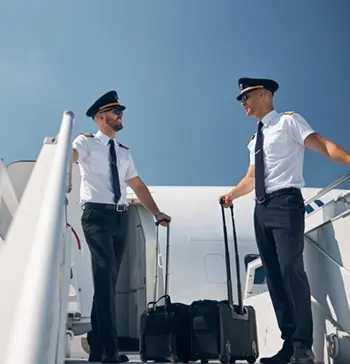
Want to find out more about our pilot courses?
Download our free eBook to learn all about pilot training in the Philippines, including the qualifications needed, the training process, available courses, and career opportunities. Find out how you can take the first step toward a rewarding career in aviation.






